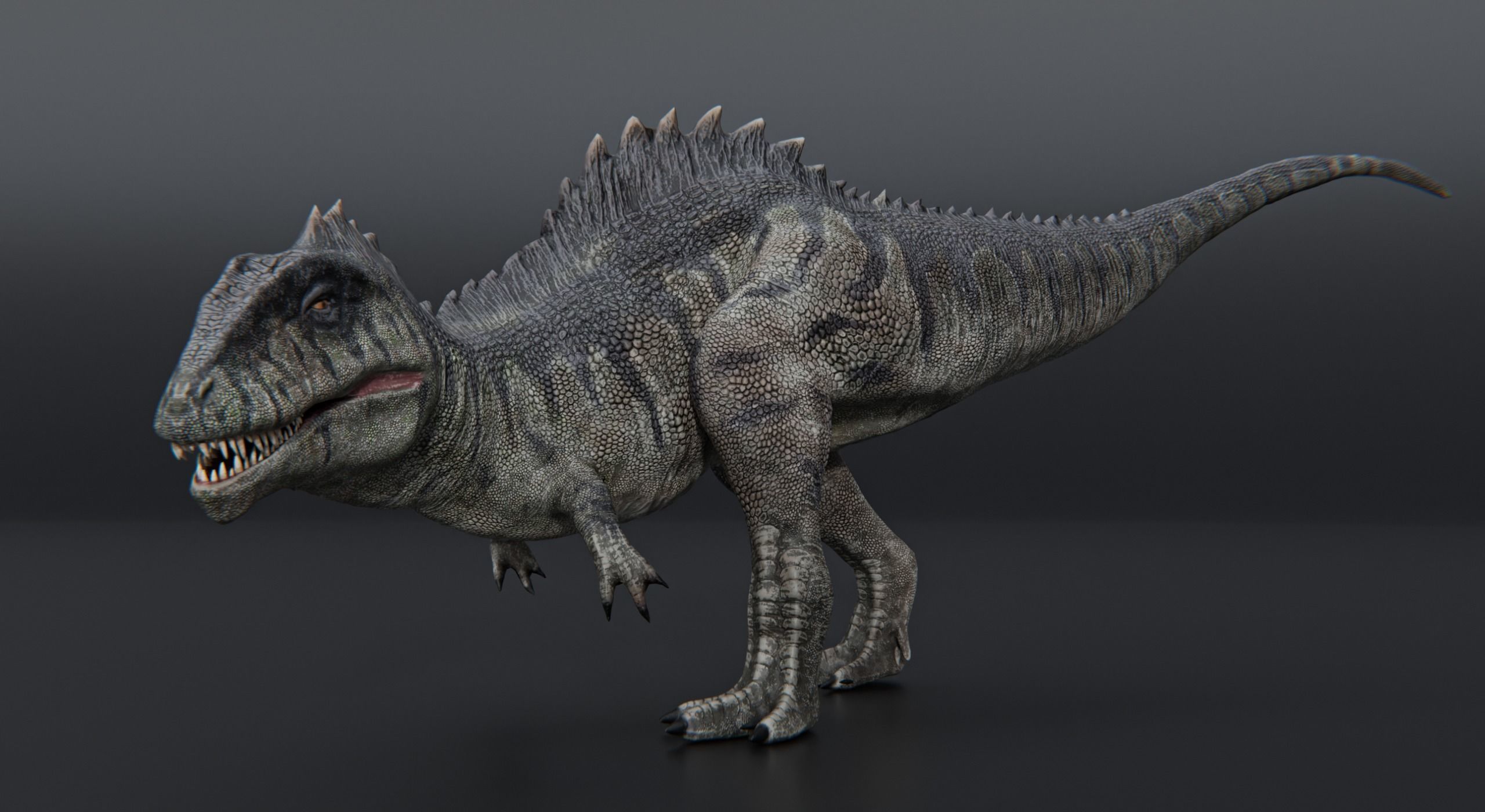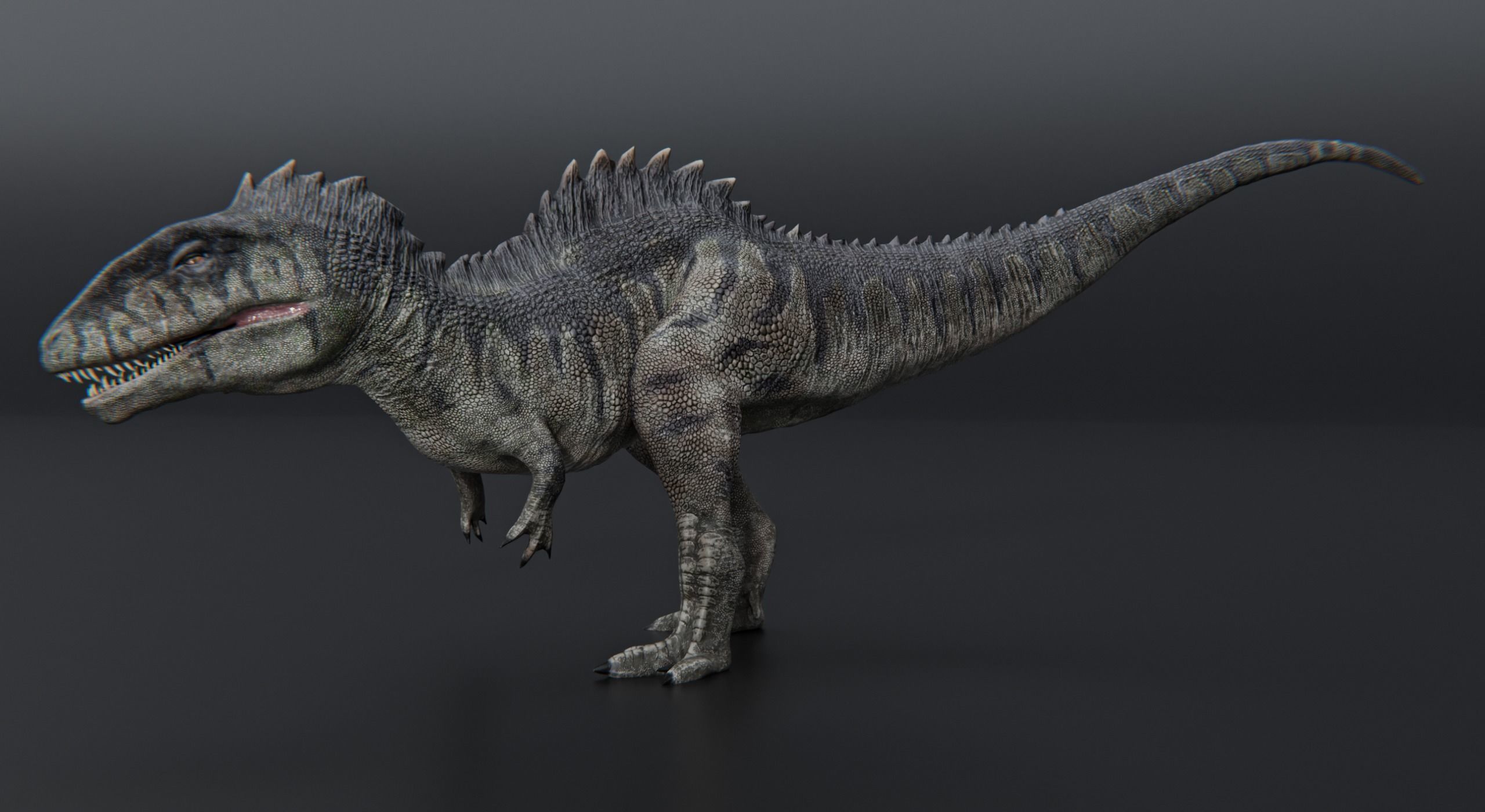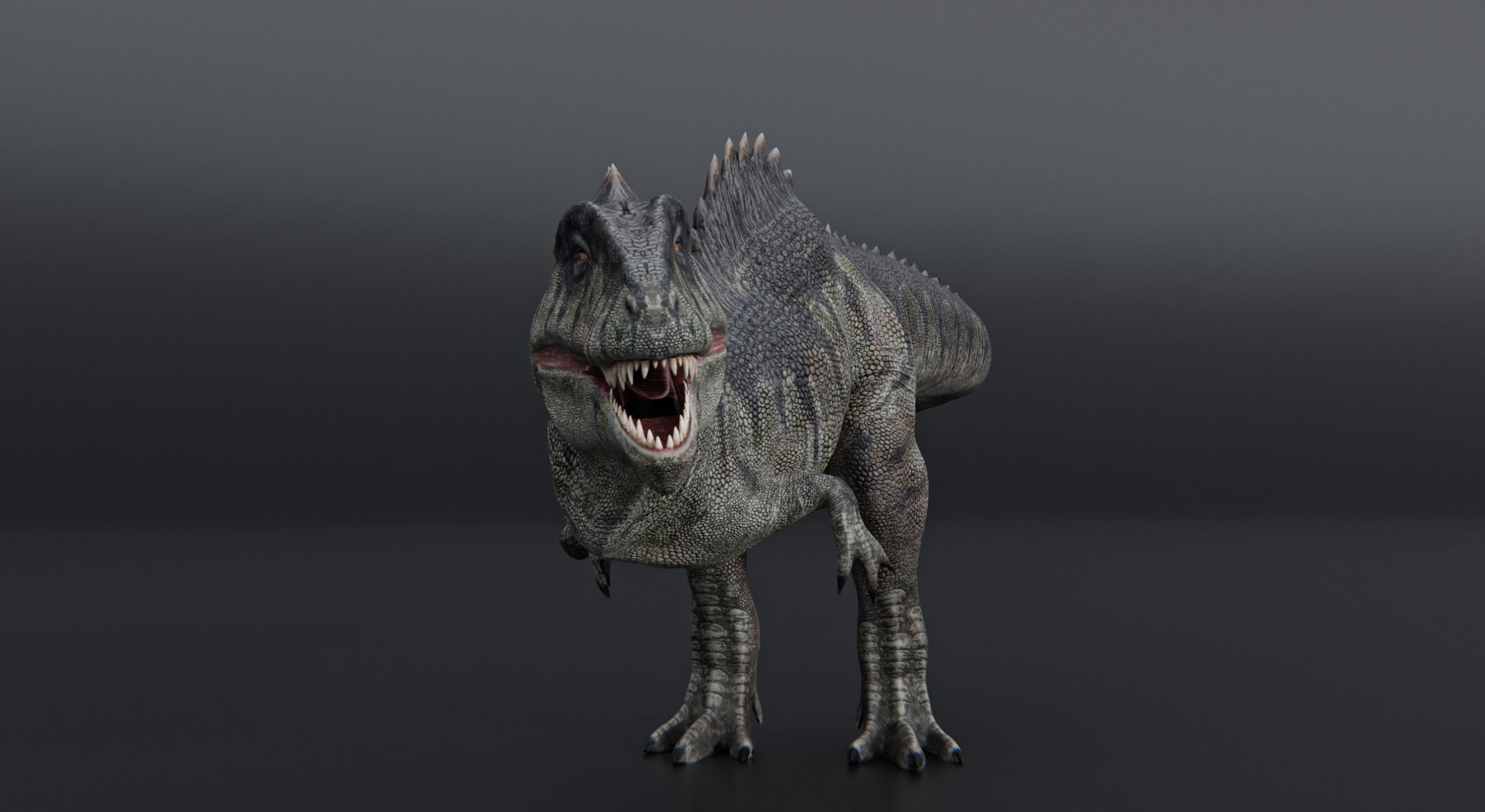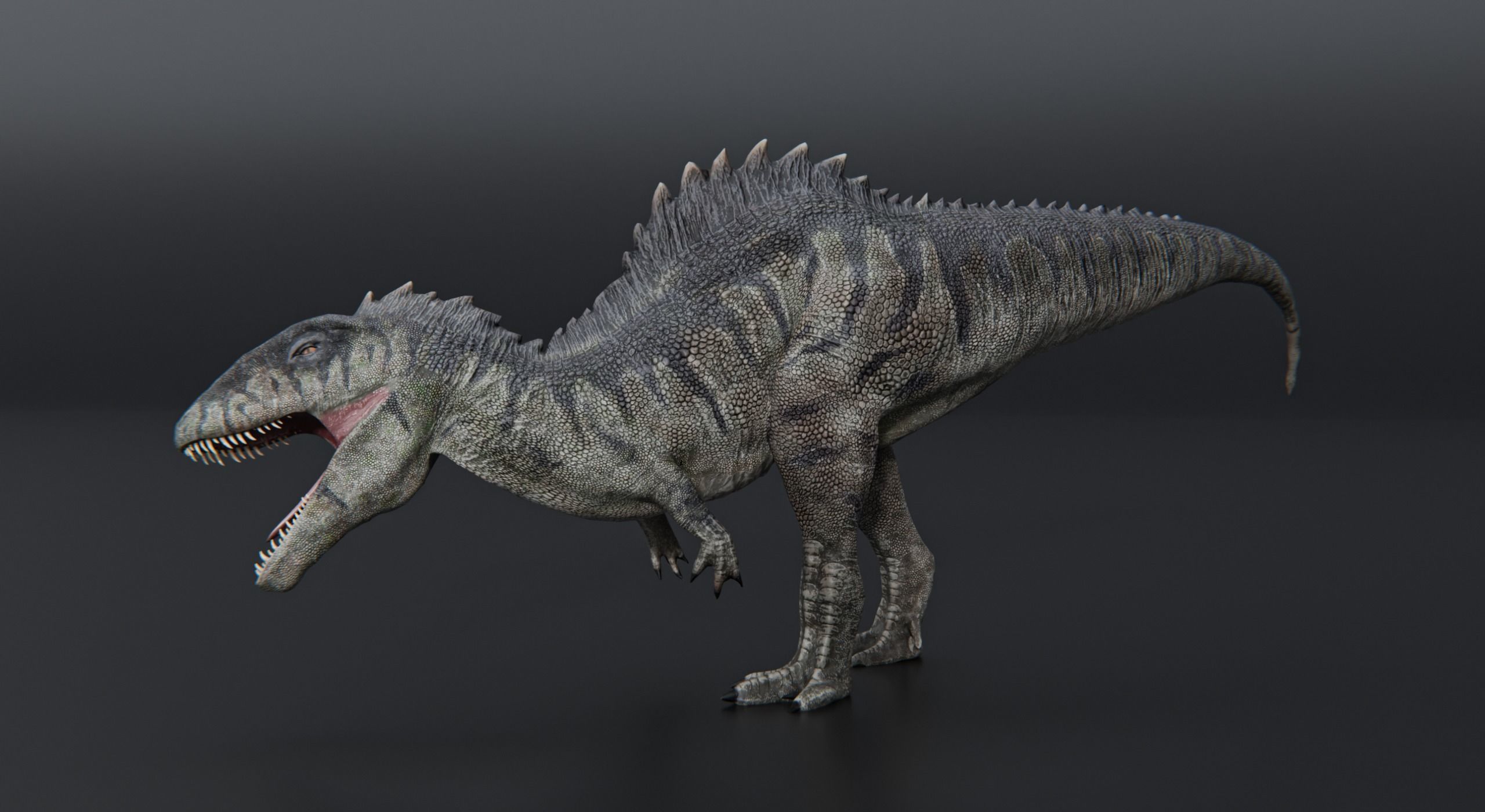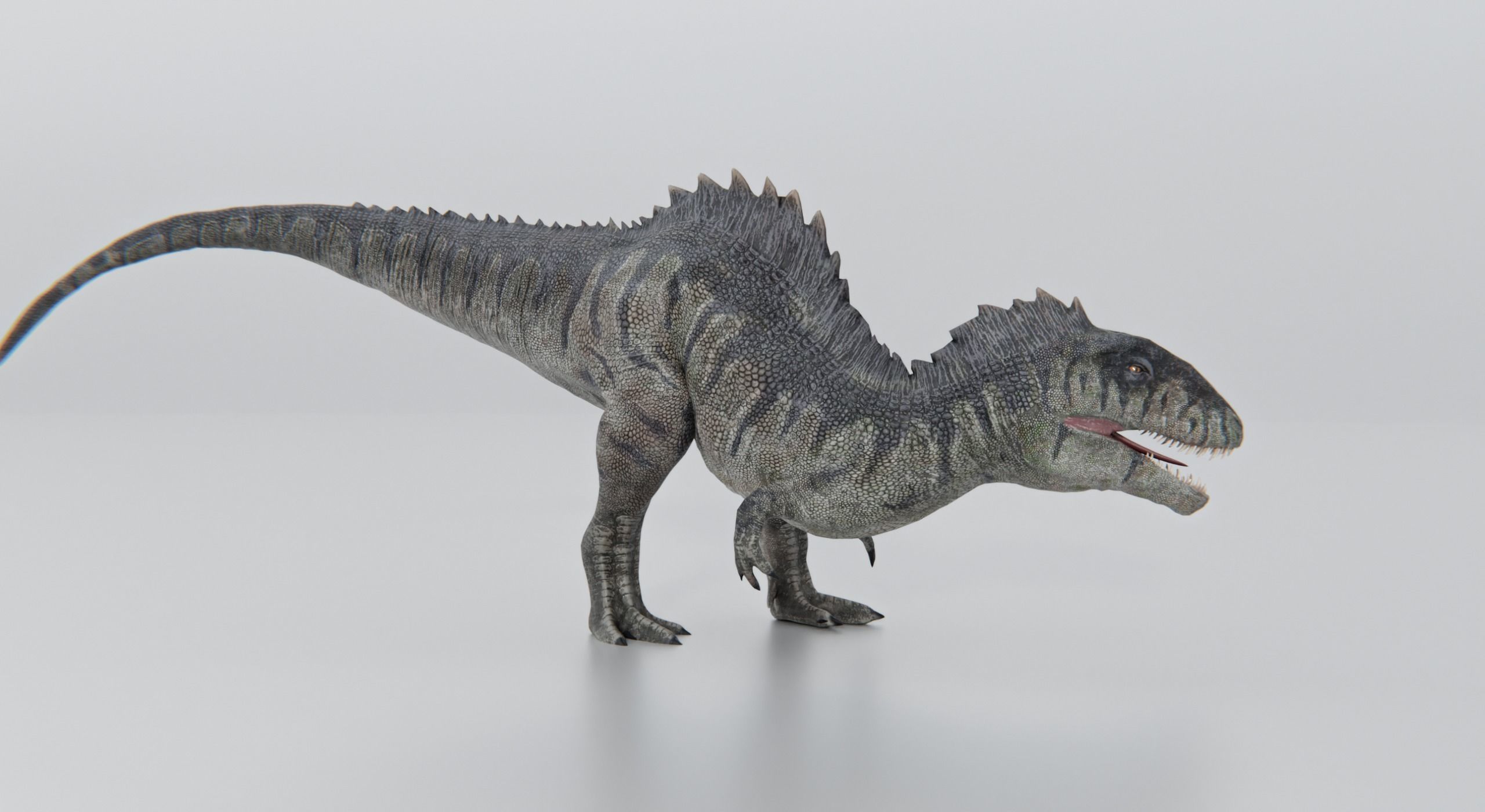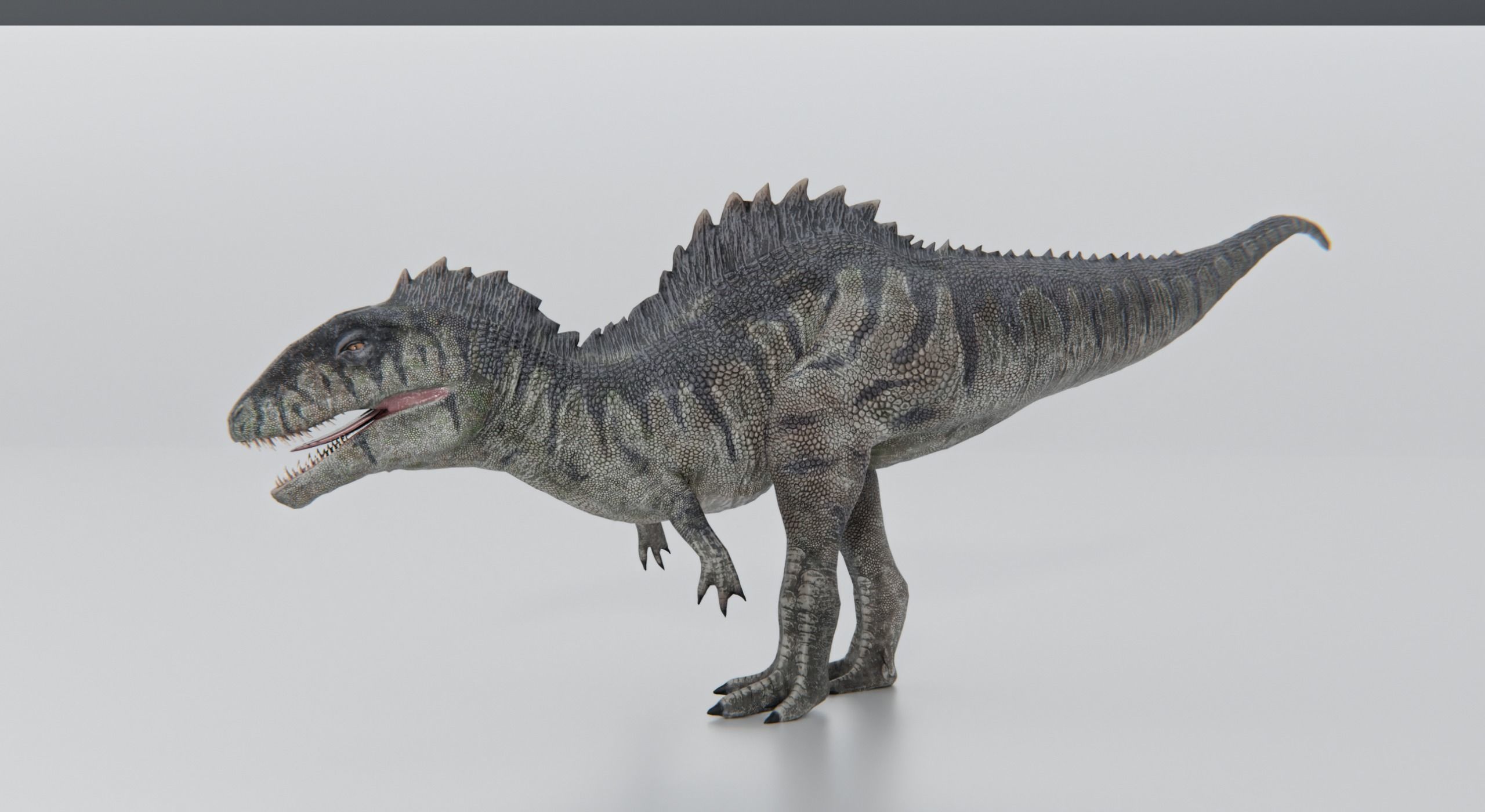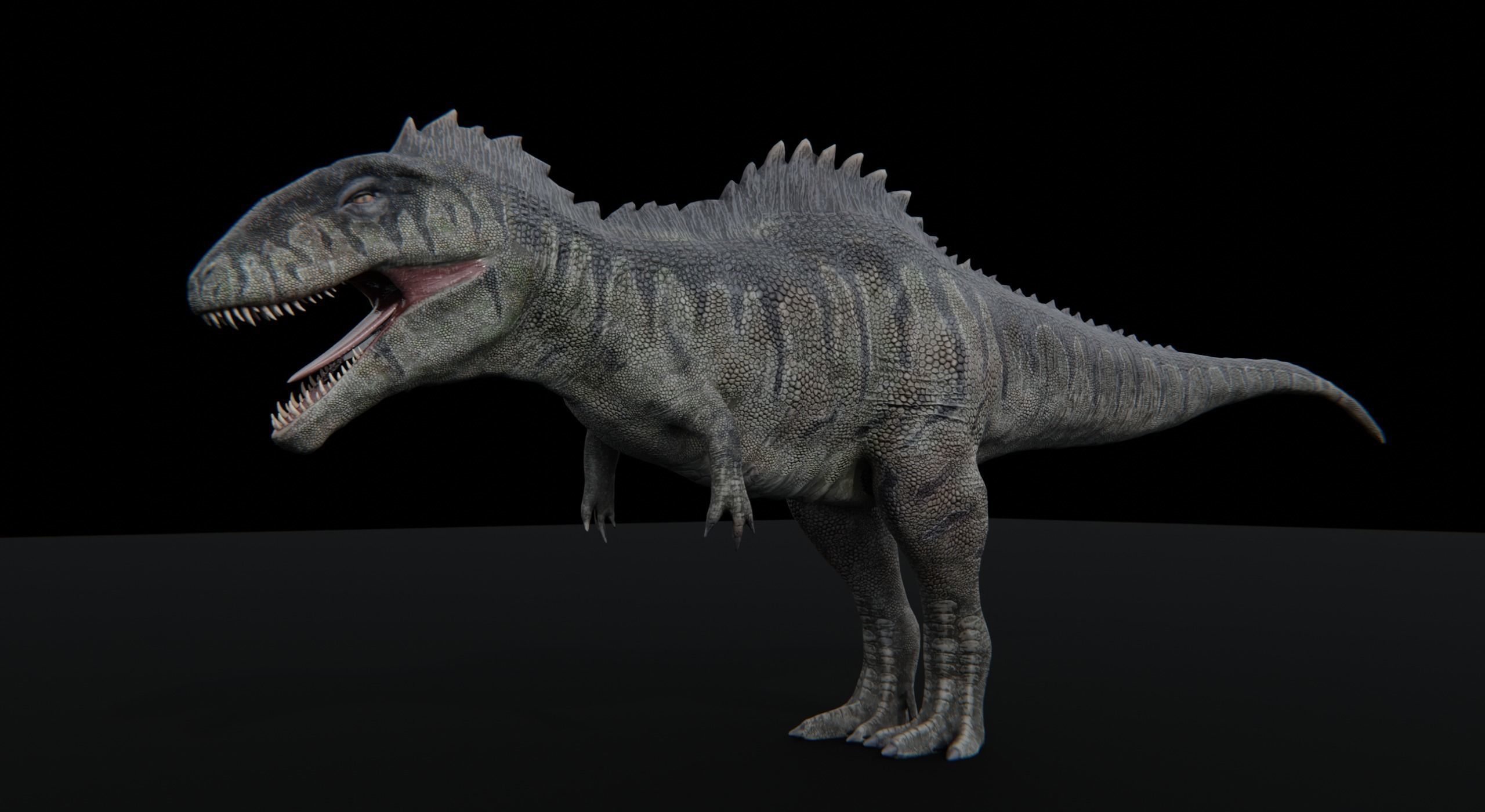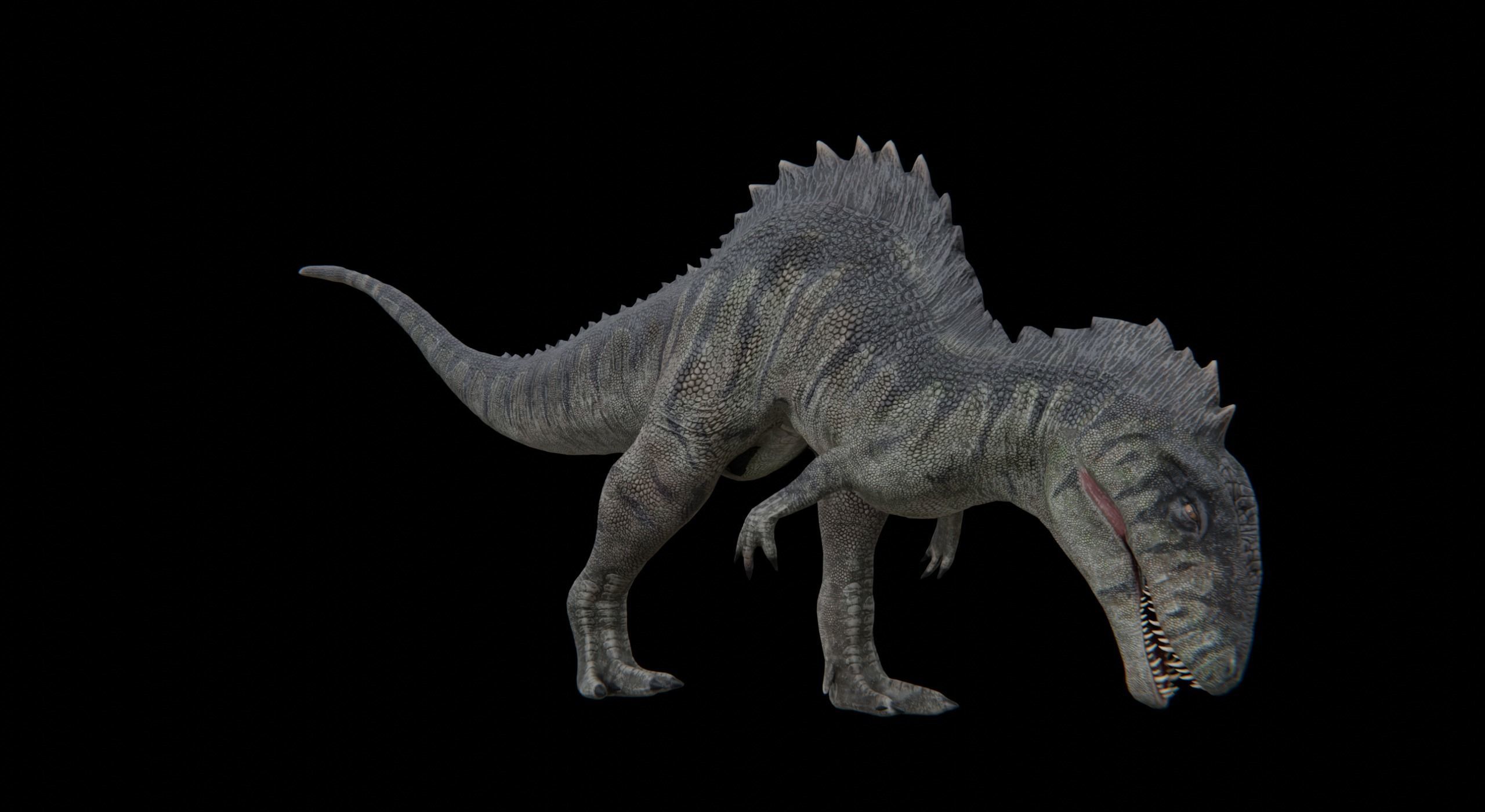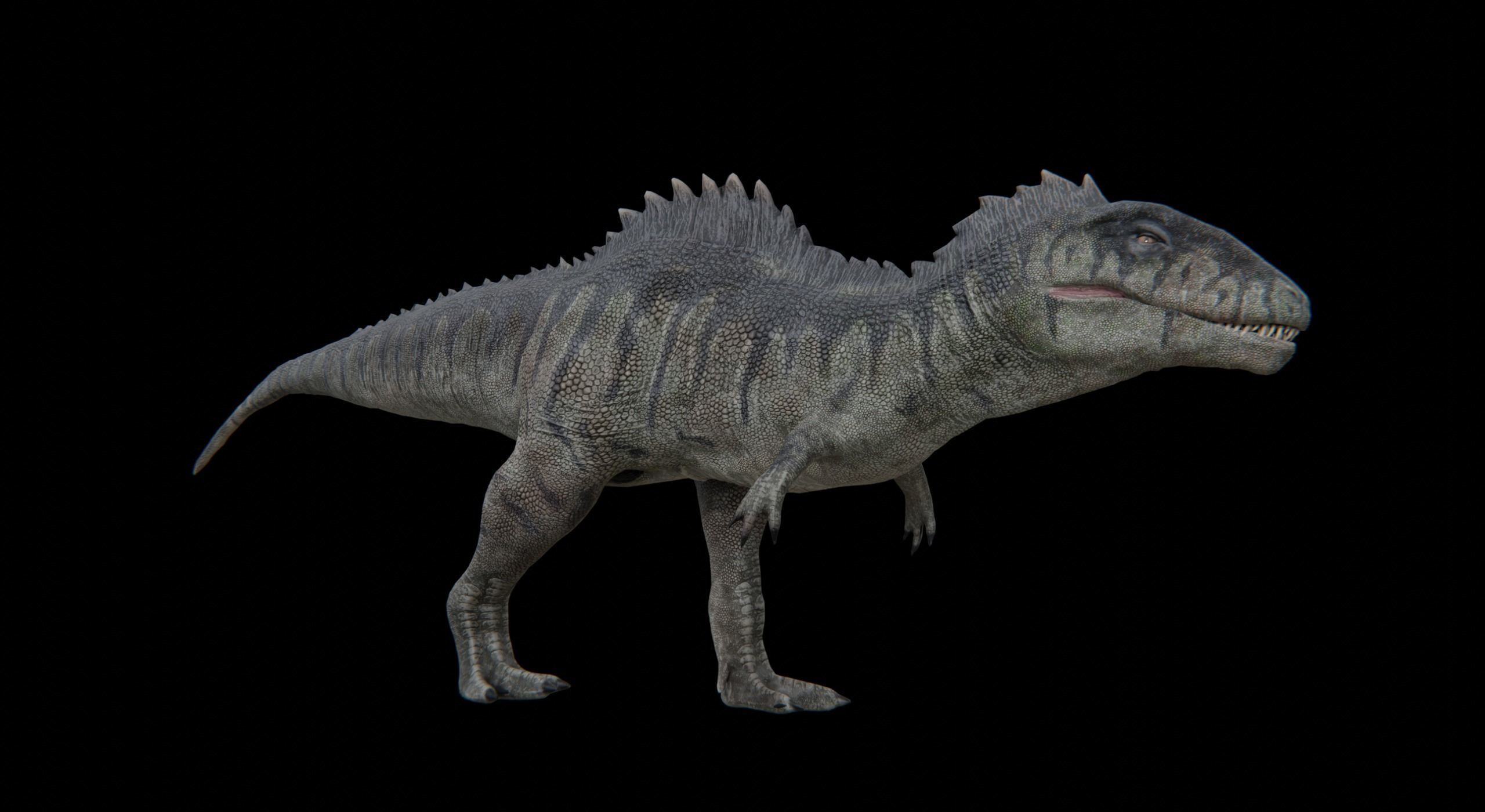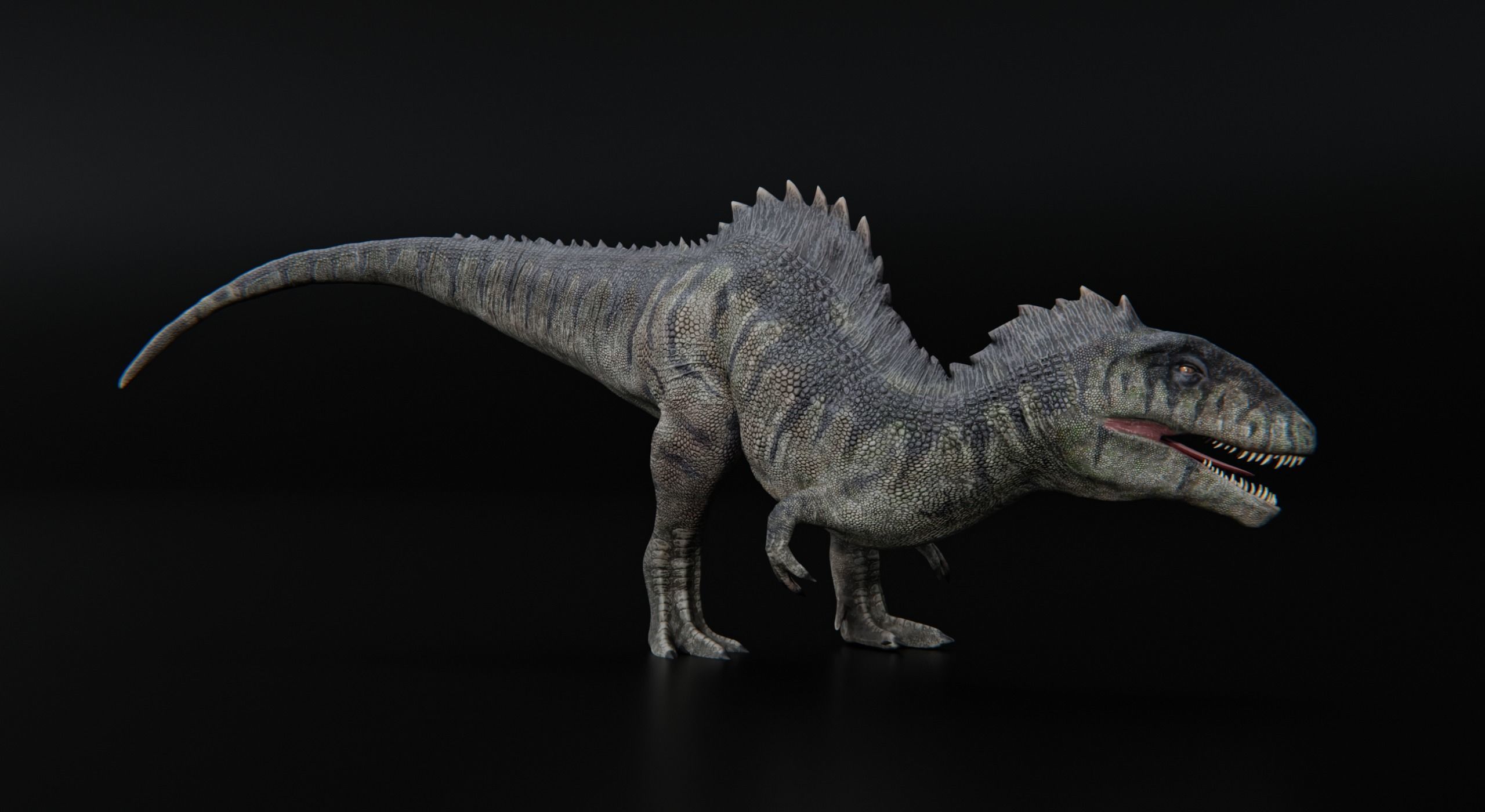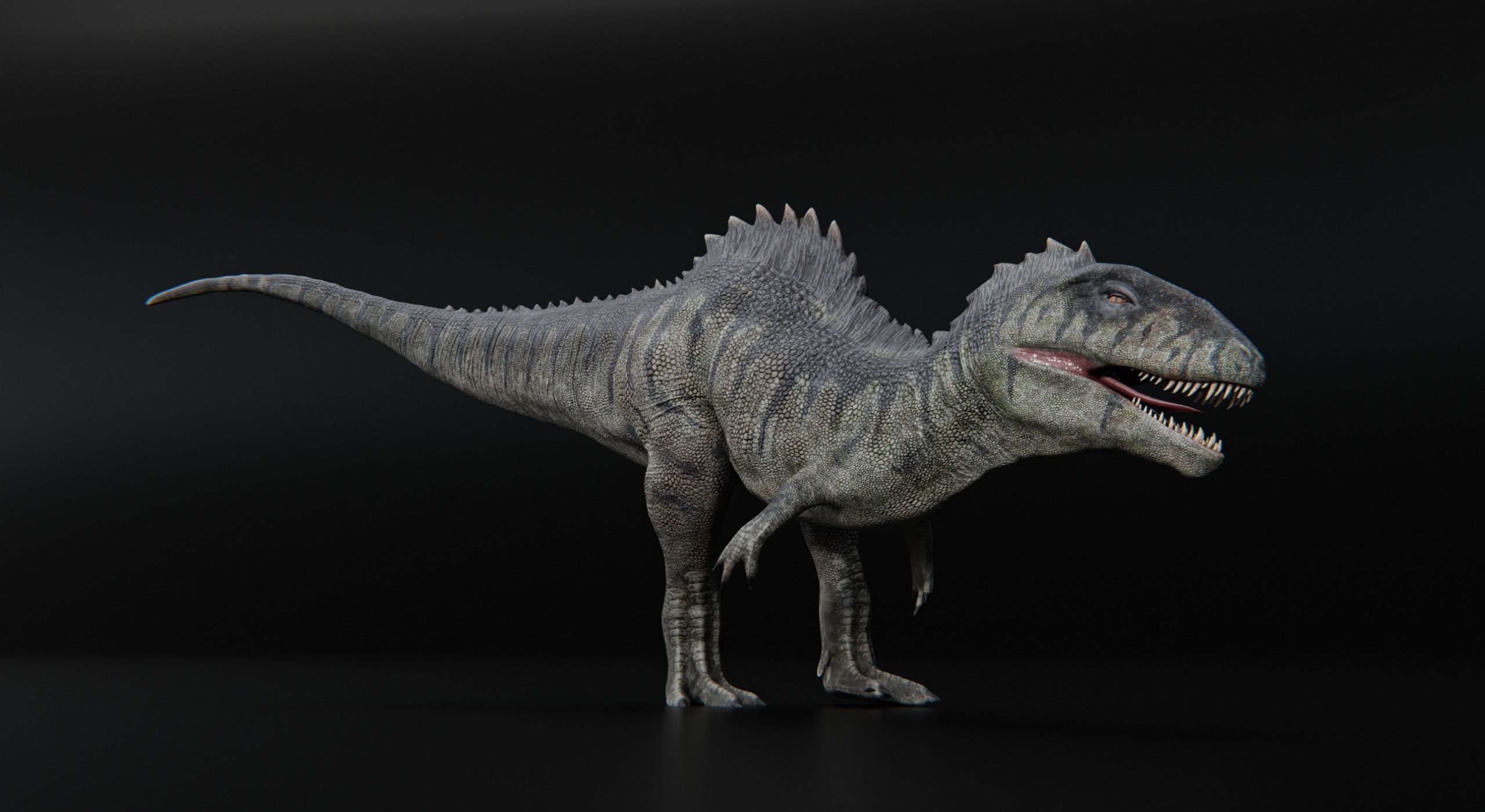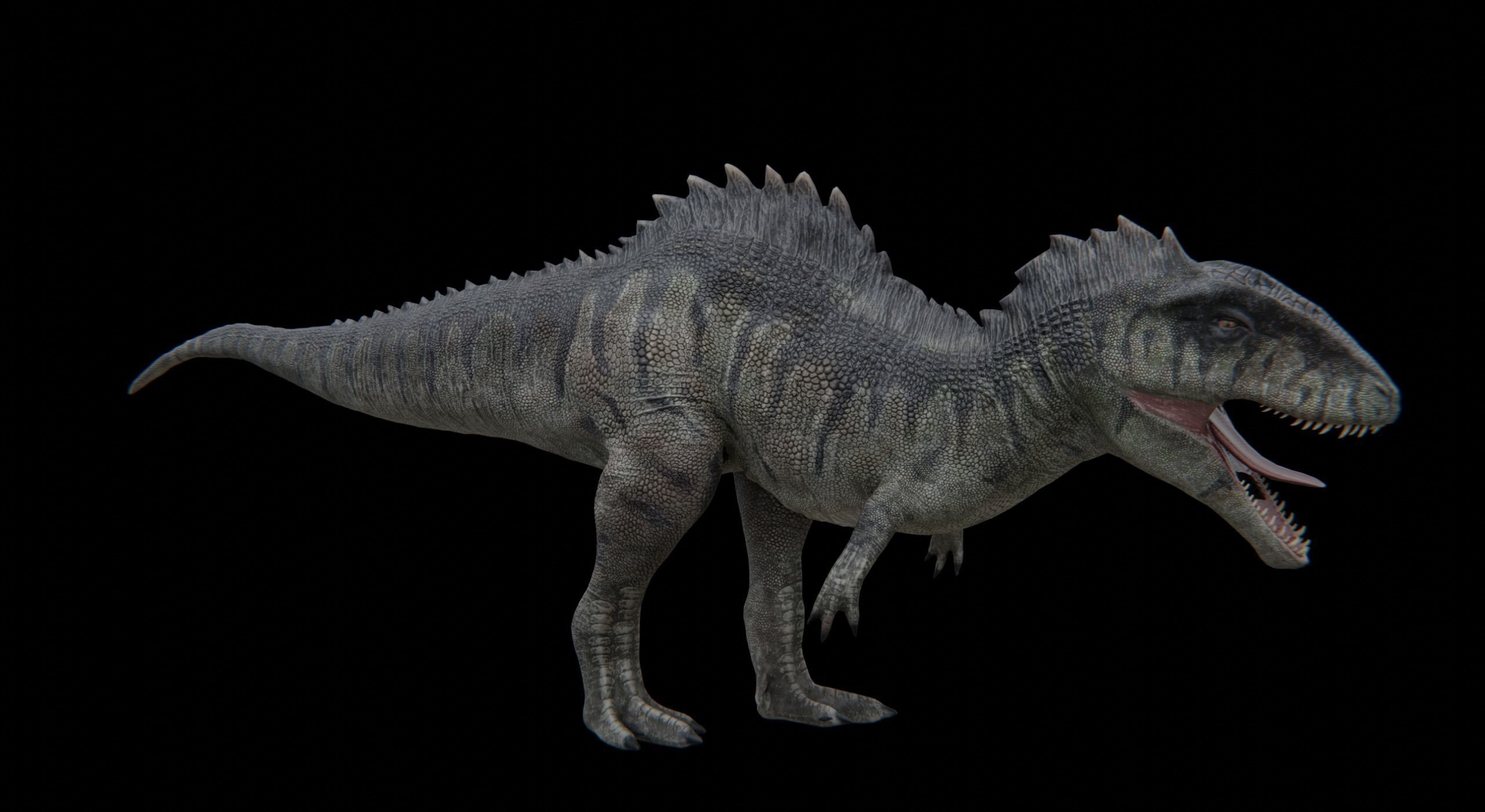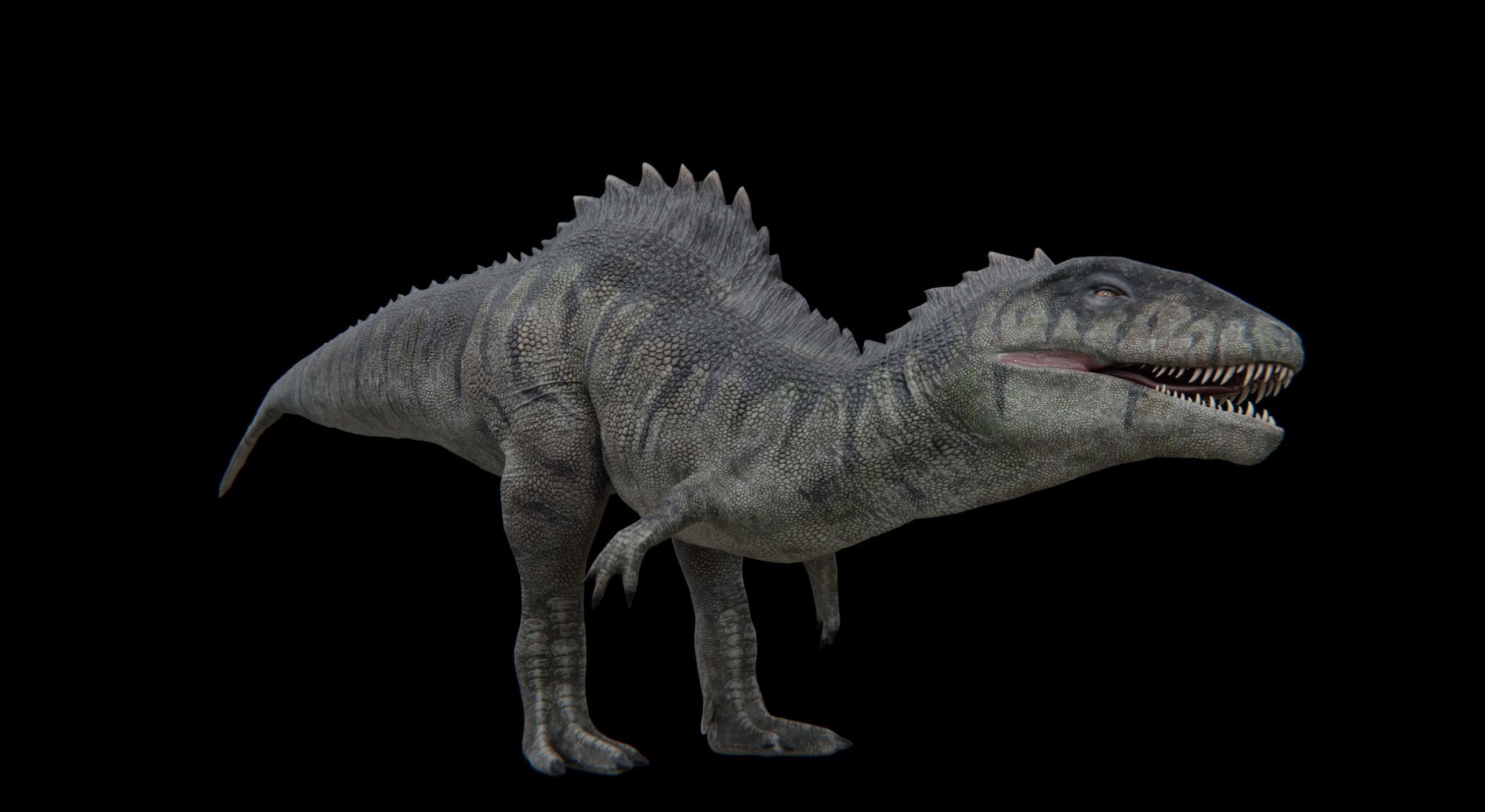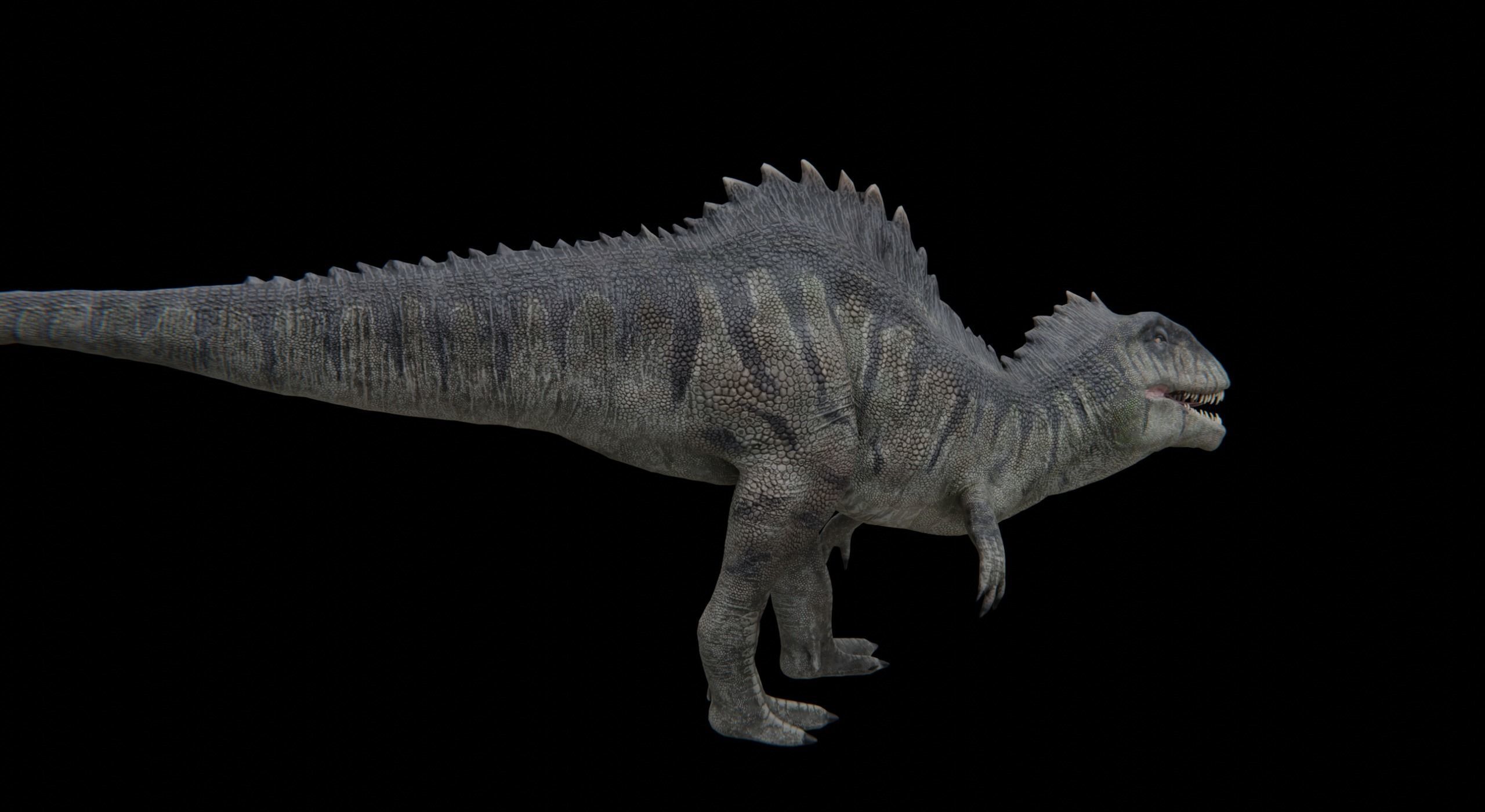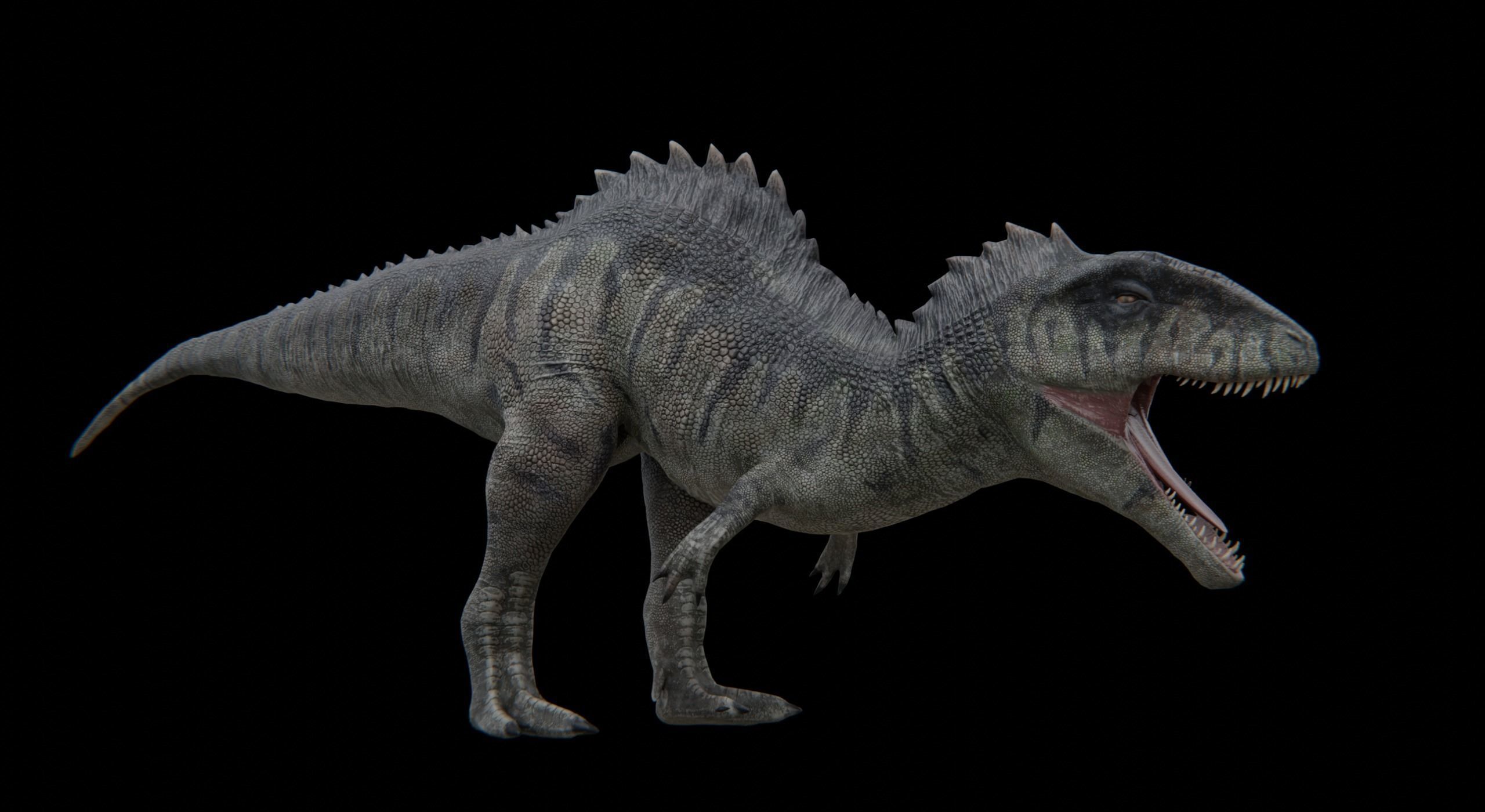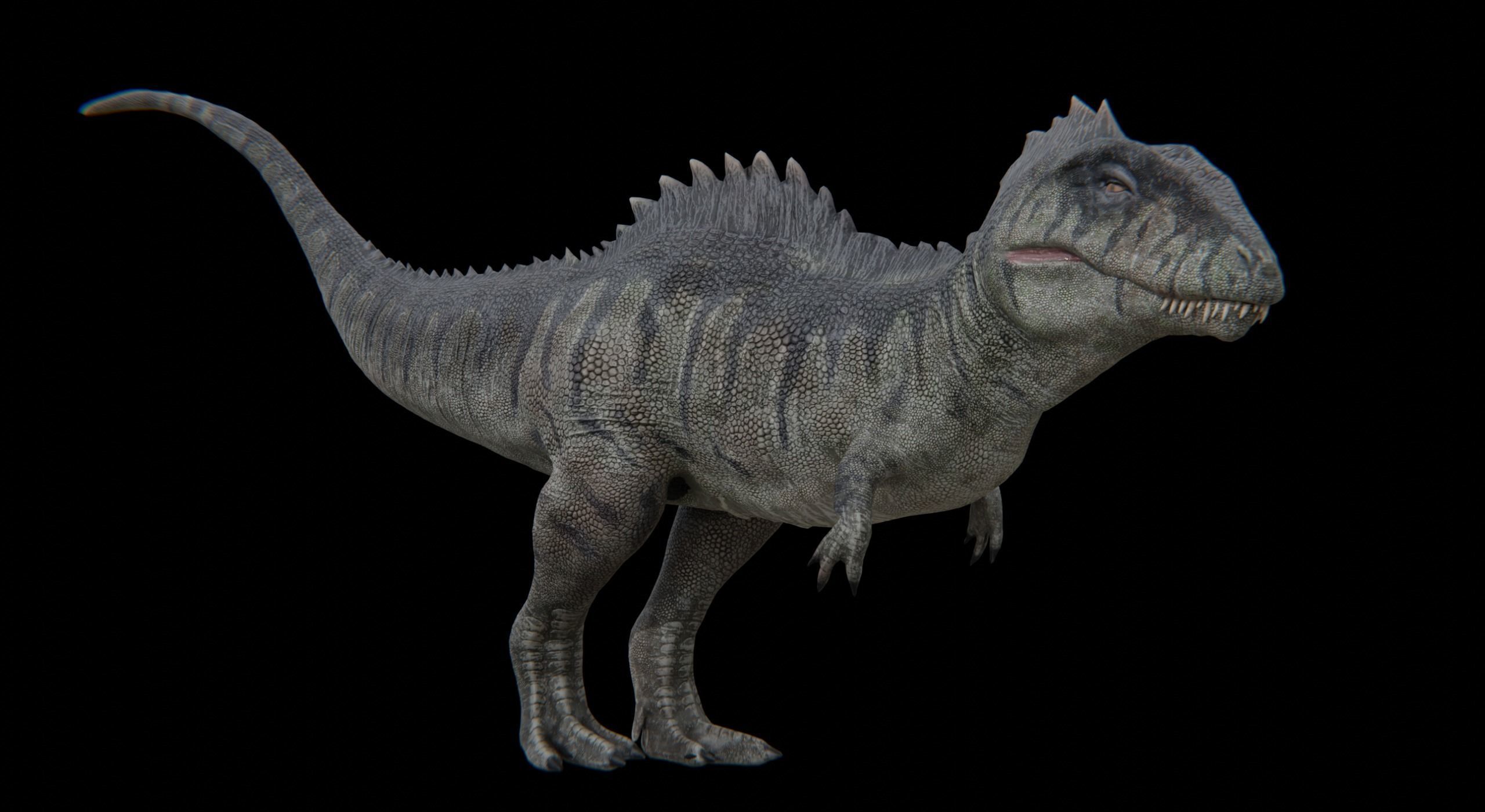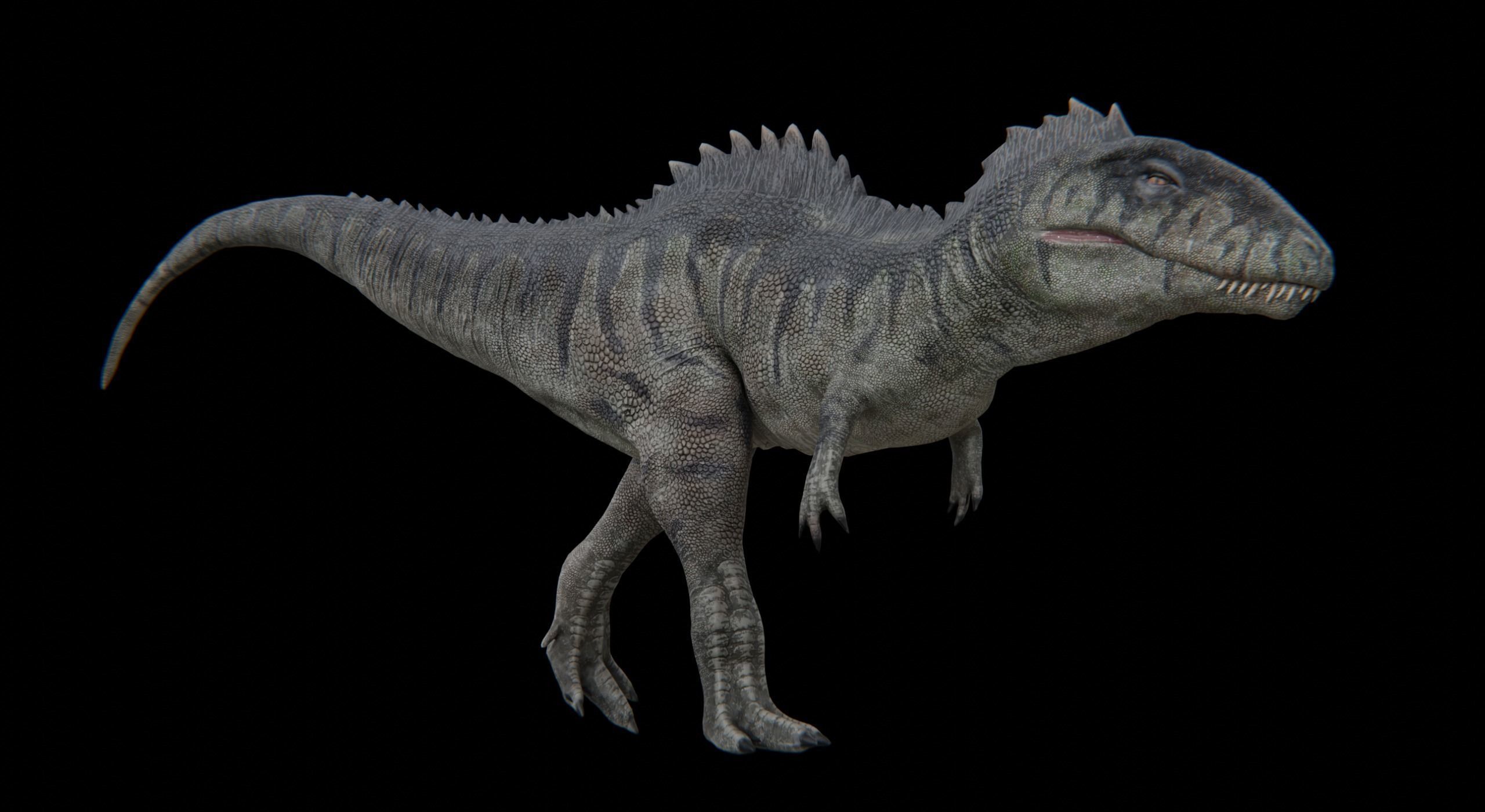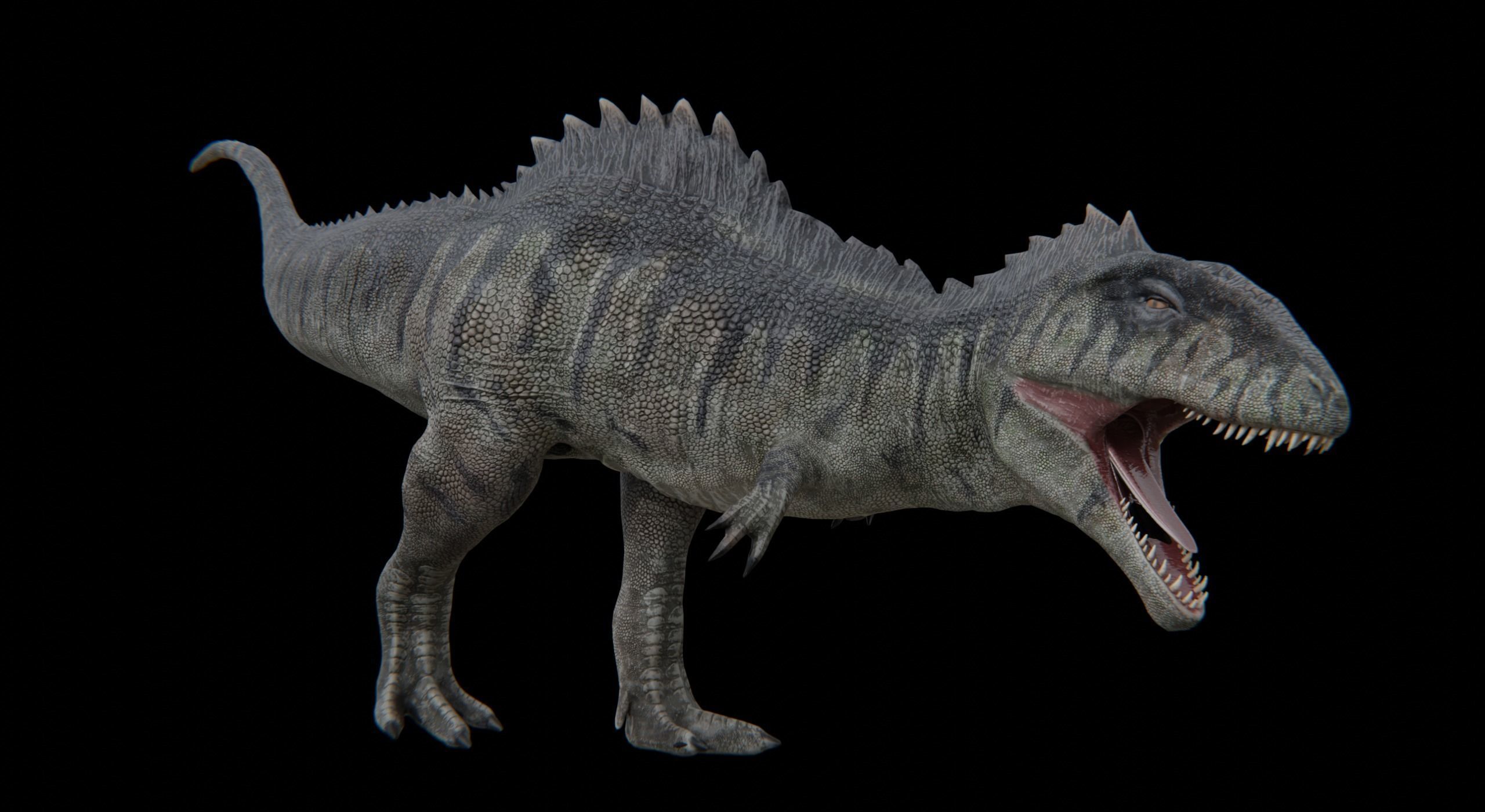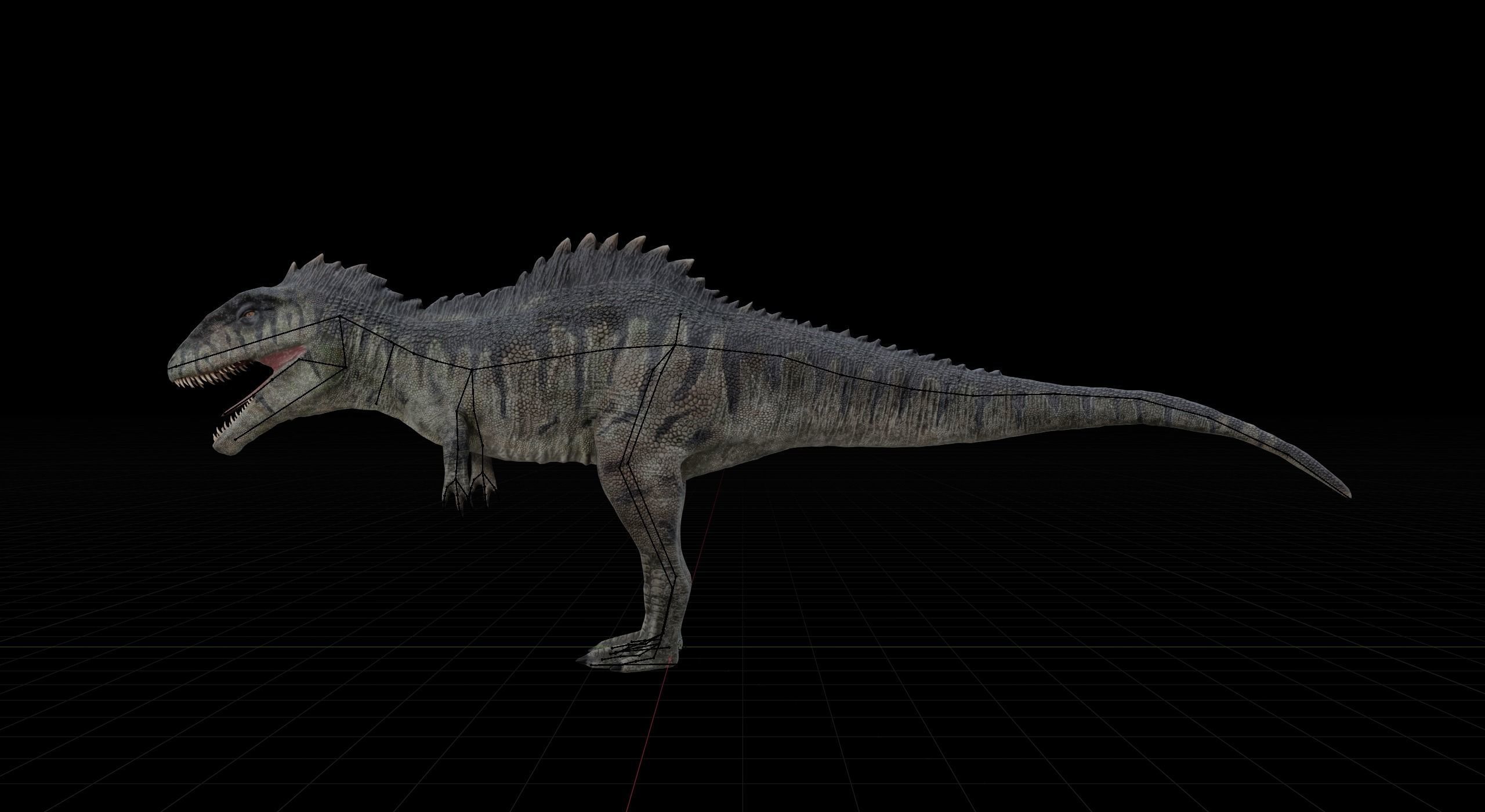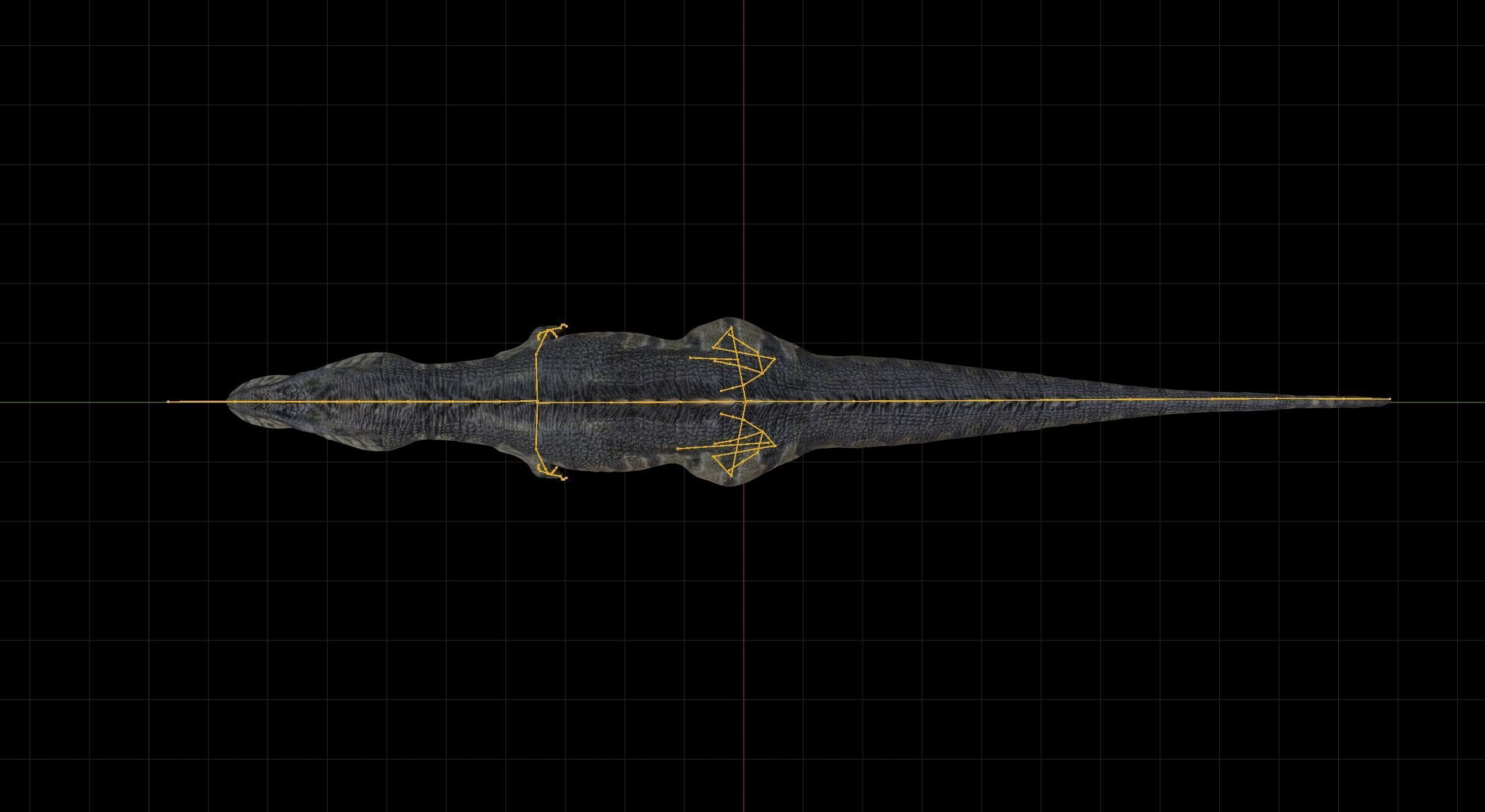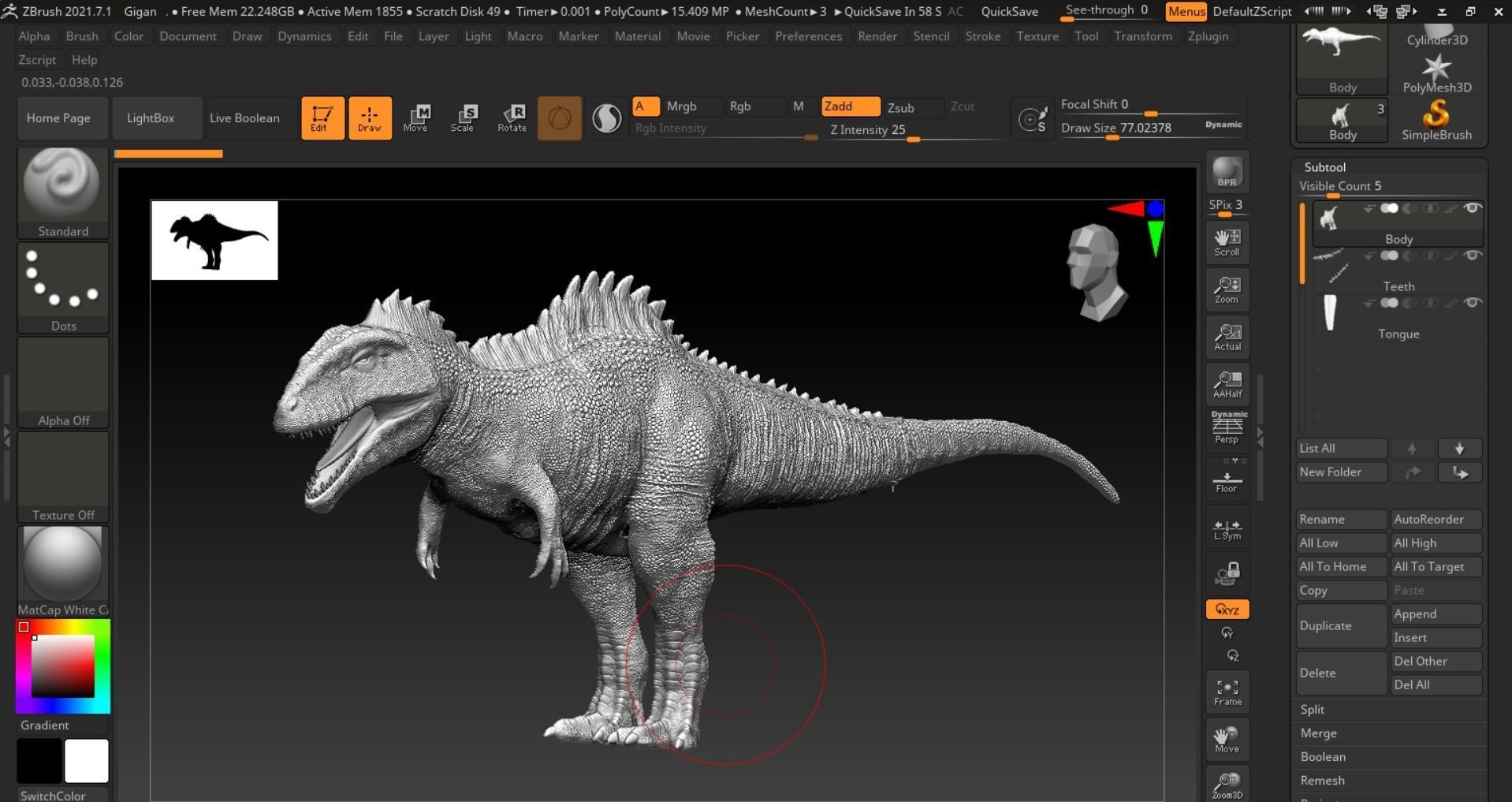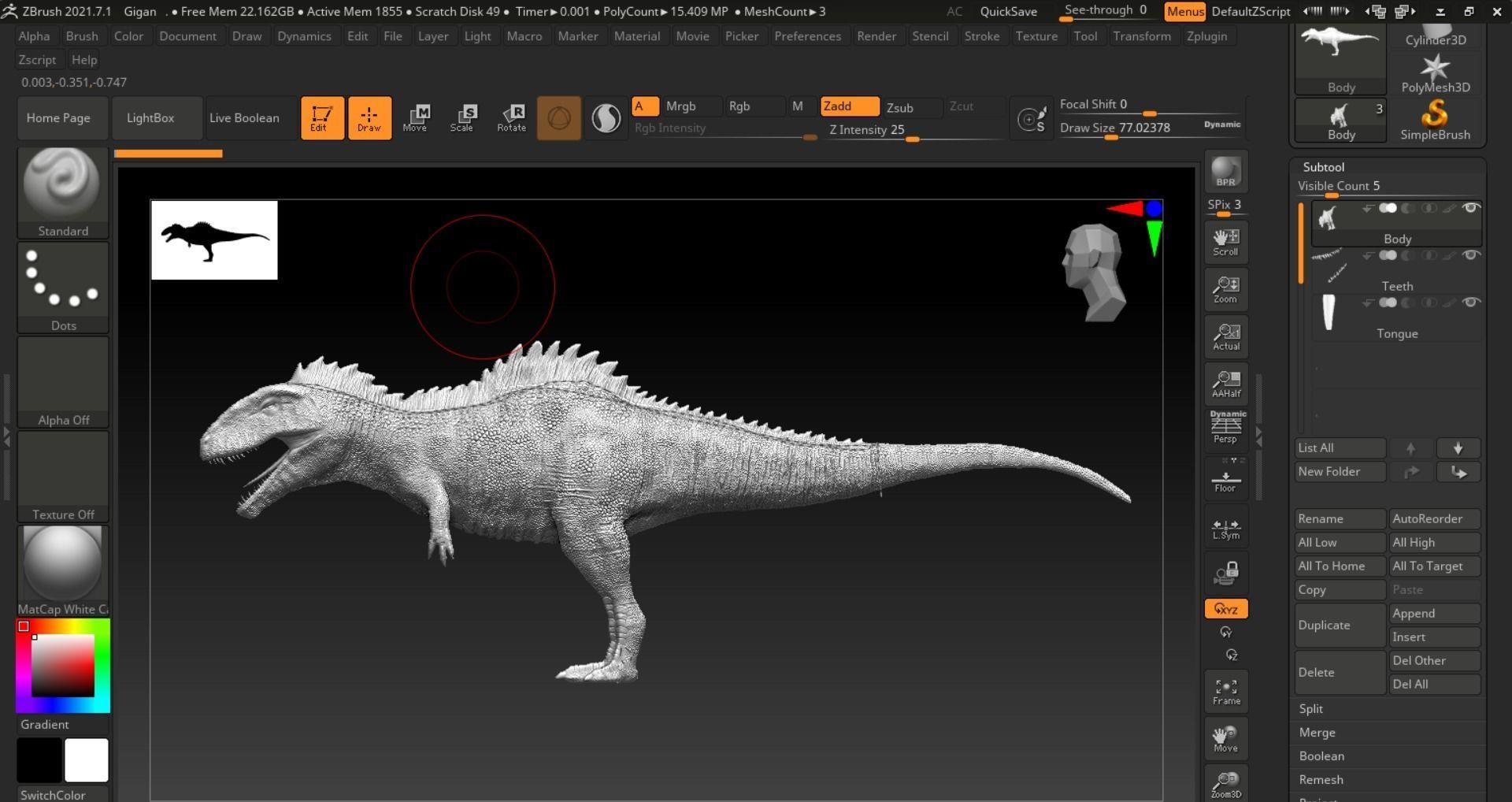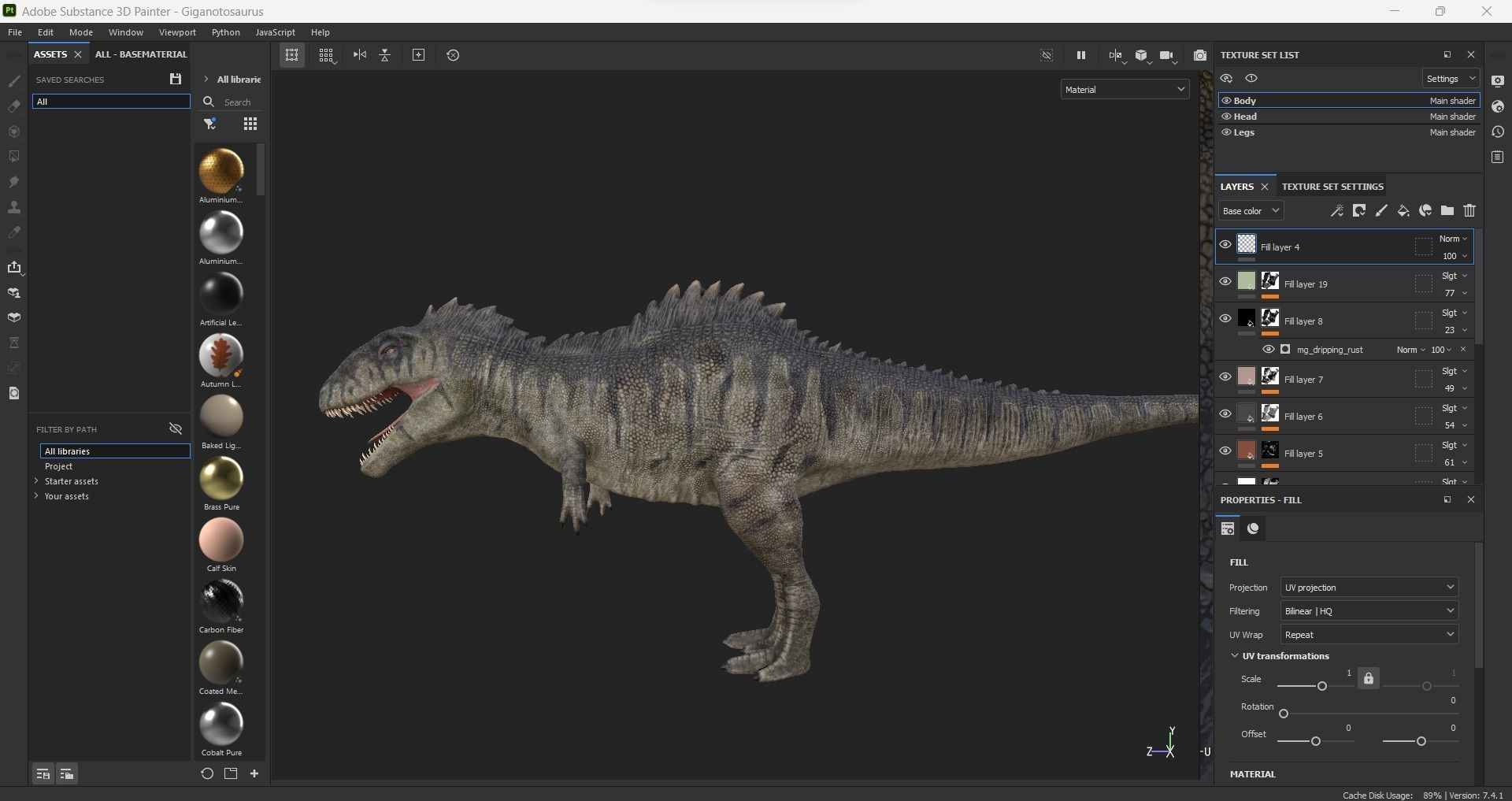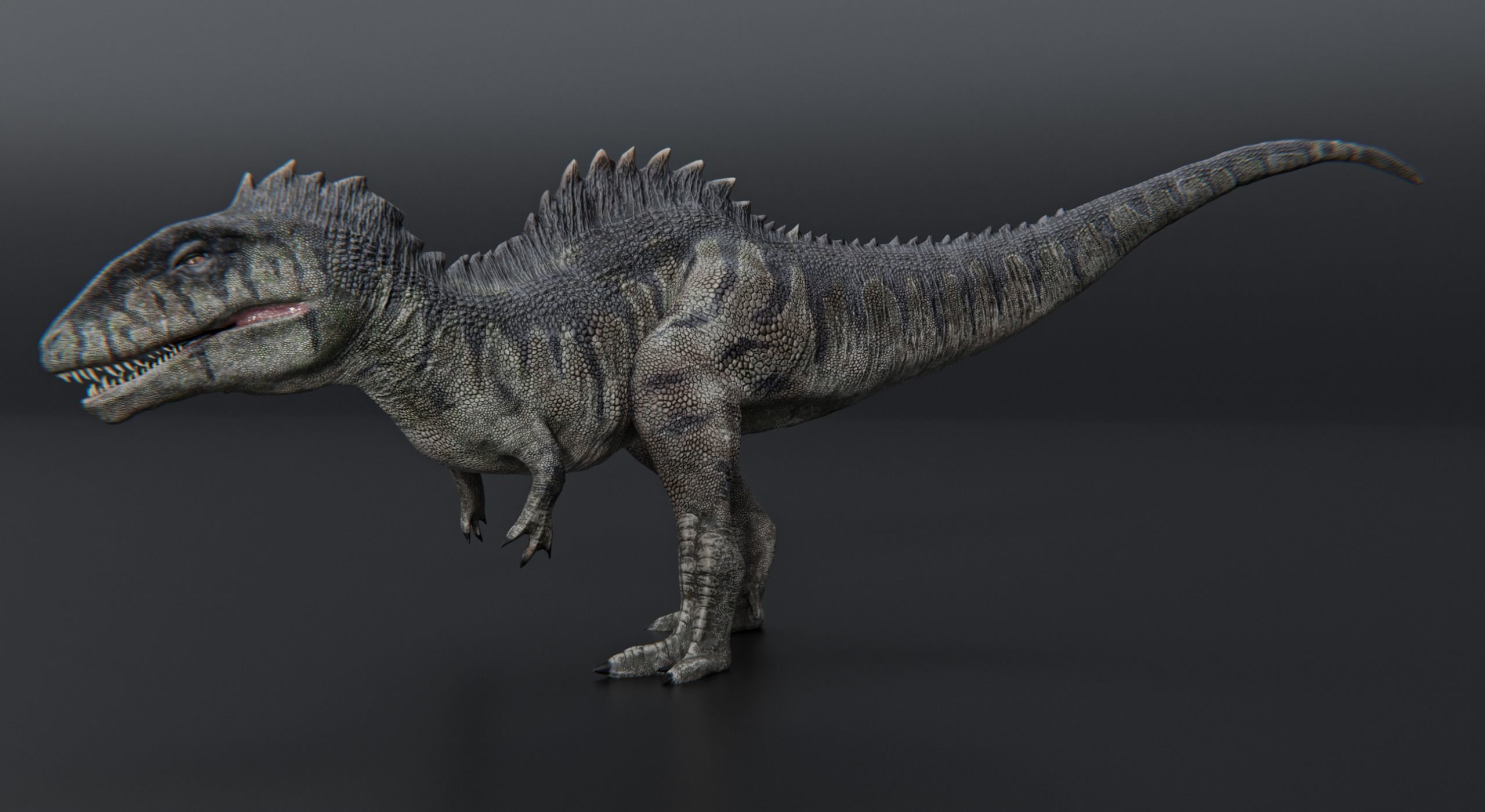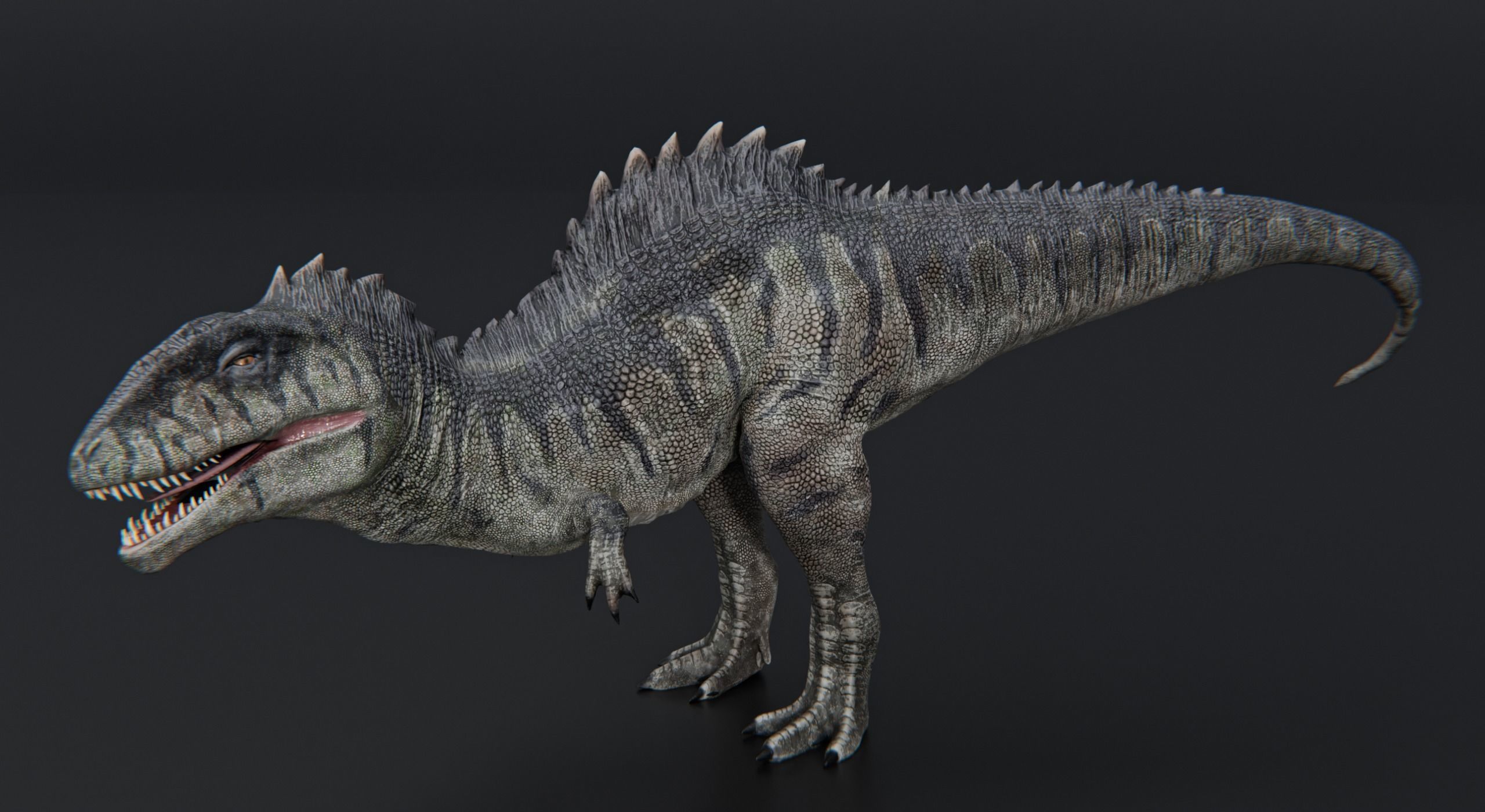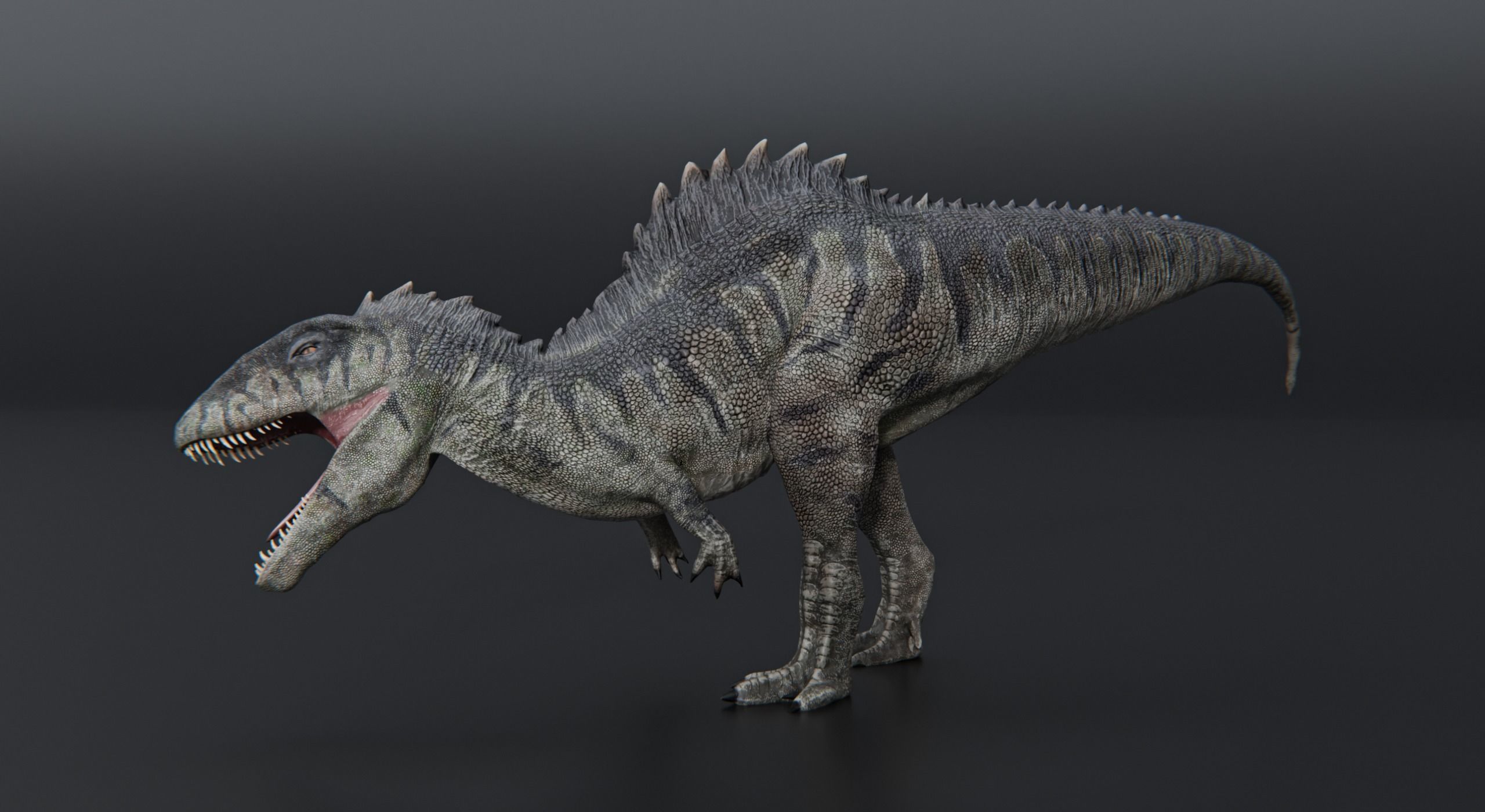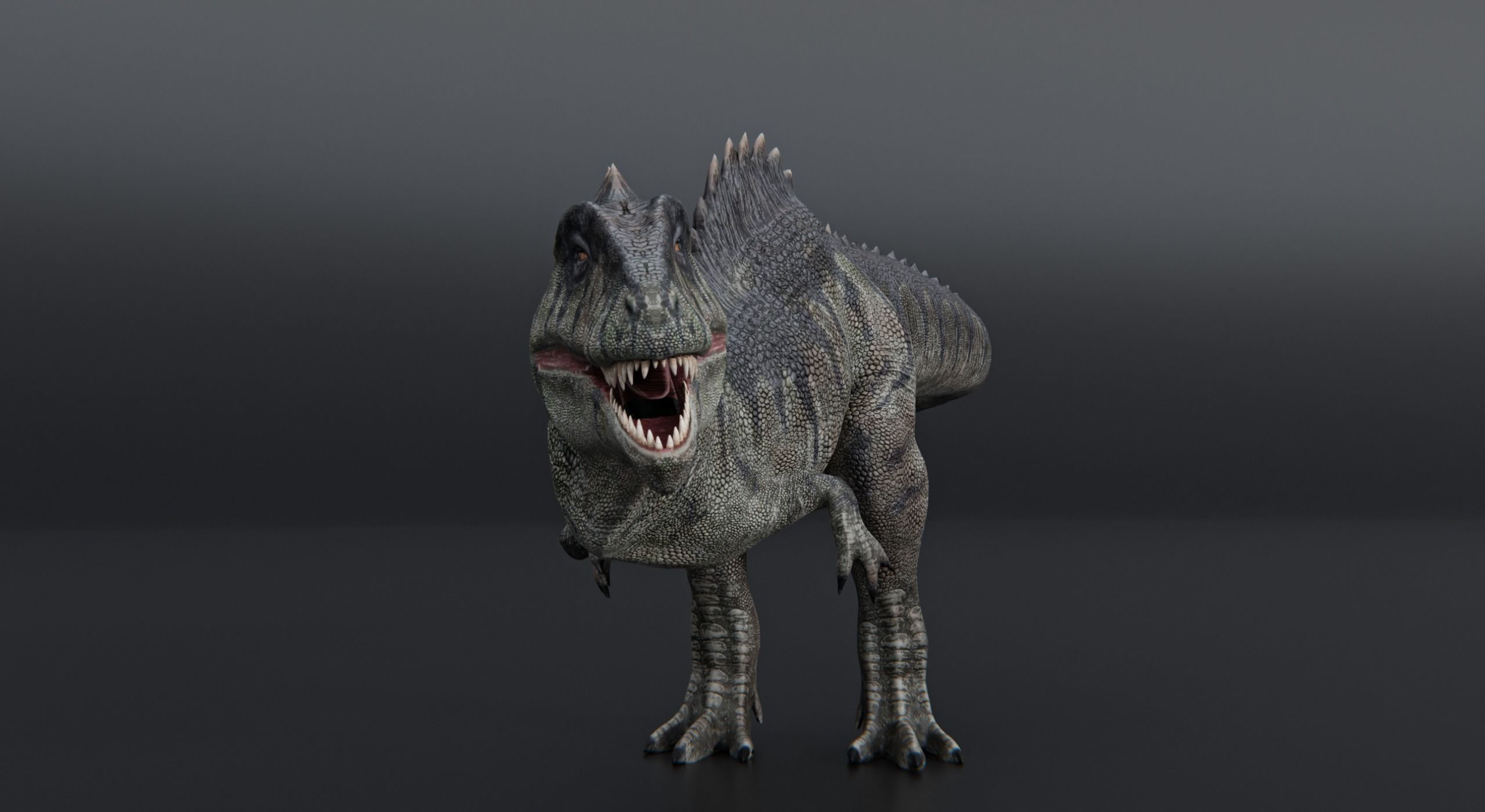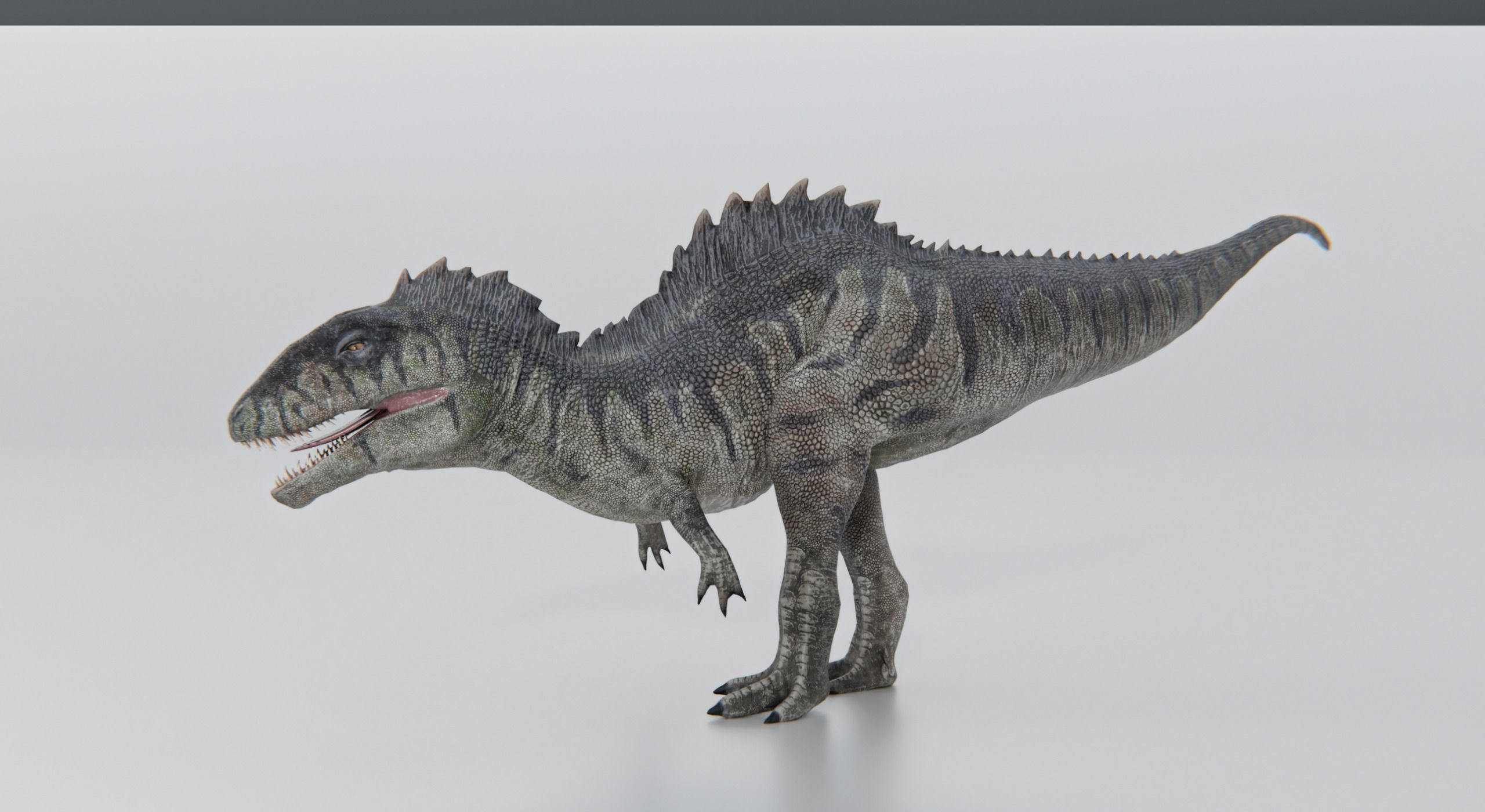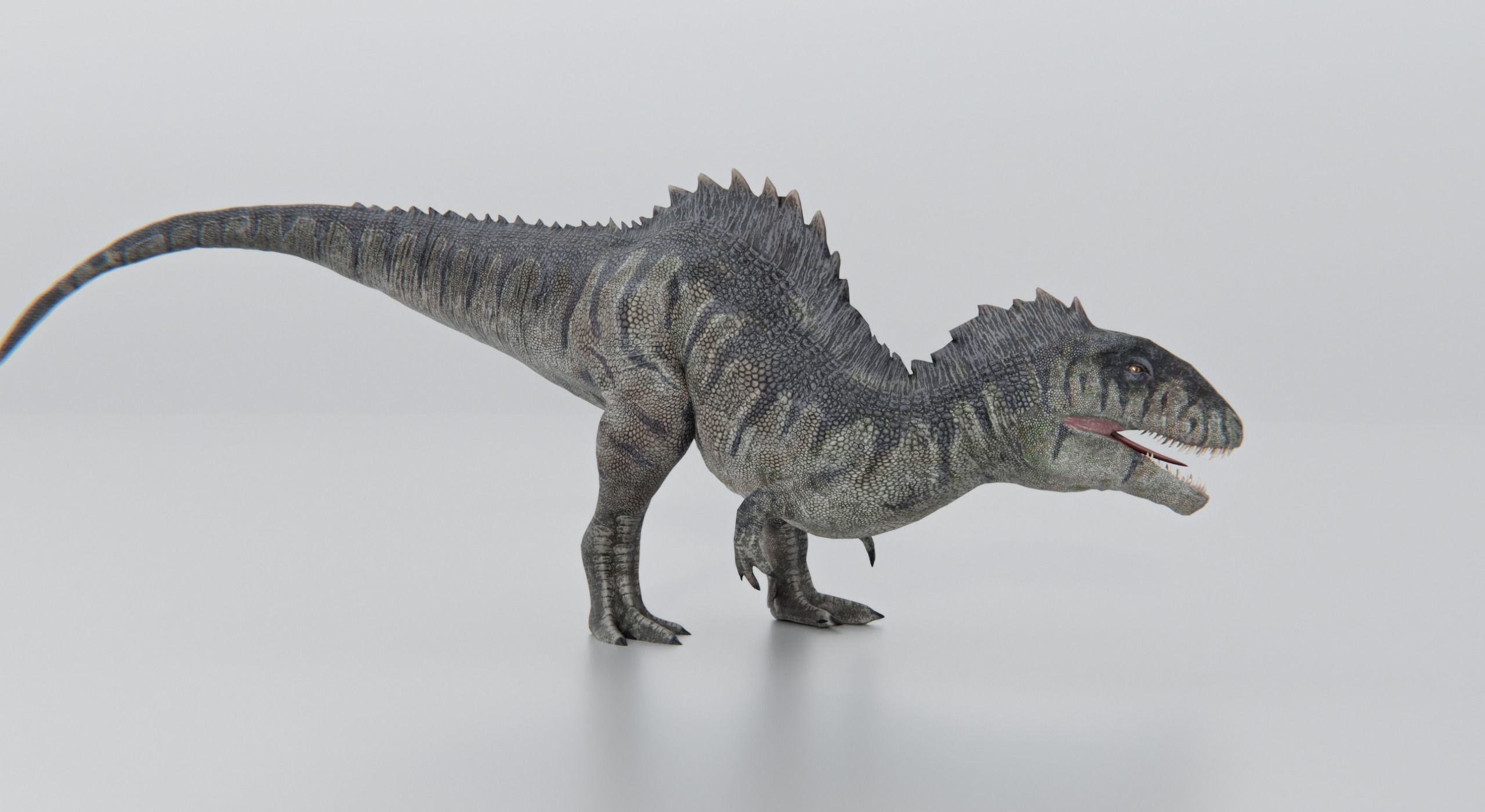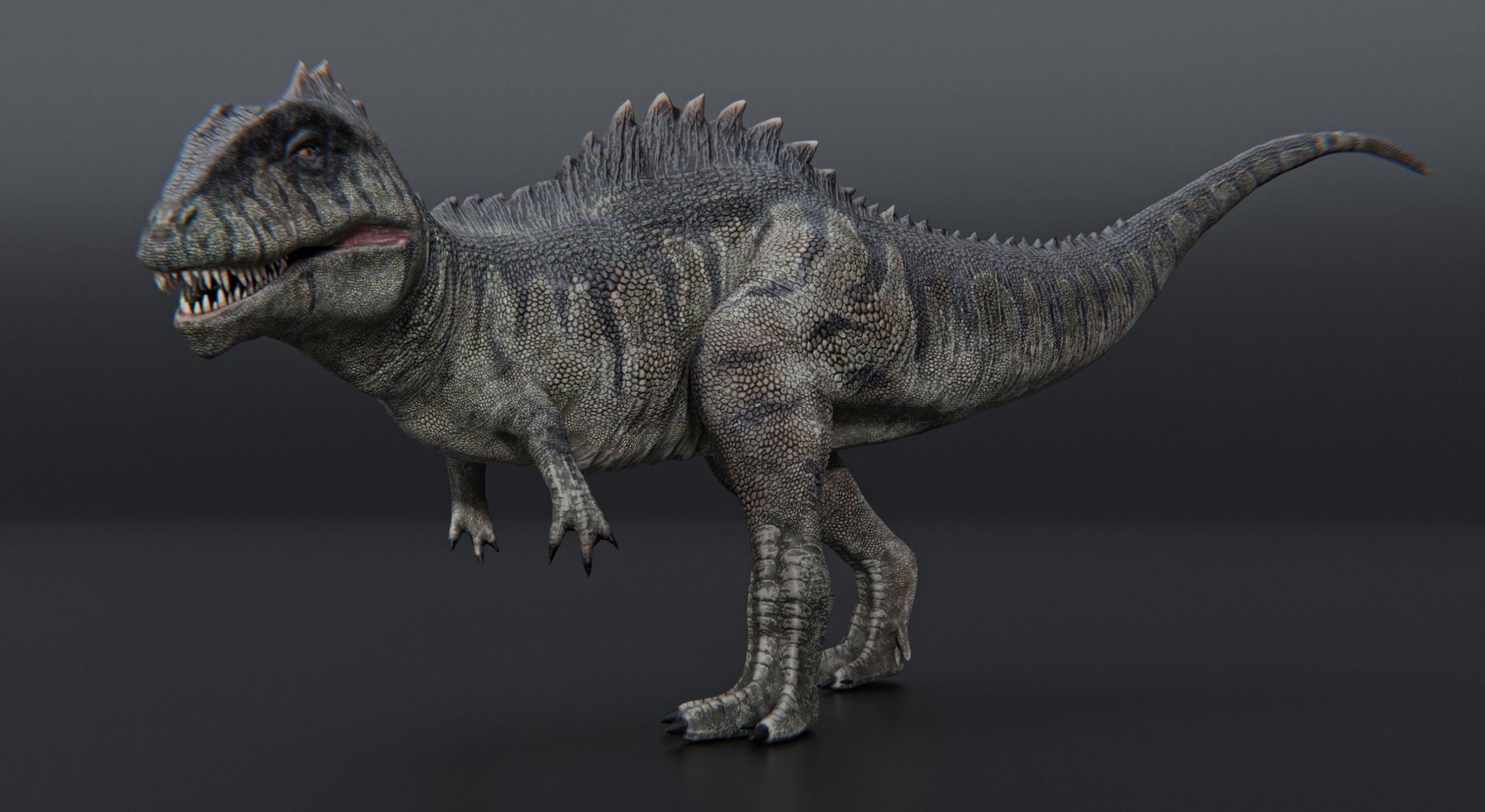
Monster Giganotosaurus Dinosaur Low-poly 3D model
I. Overview
- My model's name: Giganotosaurus
- Model's list: Giganotosaurus.
- Real scale model: 16m length.
- Already rigged ( .blender packed) and has animation like the preview video ( animation .packed file).
- Animation list: Idle, Walk, Run, Run Roar, Roar, Bite, Being Attack.
- The rig amature need Wiggle Bone add-ons for wiggle effect of tail bone, throat bone and hand IK bone. (You can download it free here: https://blender-addons.org/wiggle-bones-addon/ and it would be great if you donate to them) You need to install the add-on before open the animated Blender file.
- 3 udim non-overlapping UV mapping.
- Texture maps resolution: 4096x4096 (include Substance Painter file for export other resolutions) include: Base color map, Roughness Map, Normal map, Height map, Mask map.
- Polycount: 18448 poly quad mesh (multi subdivision levels Zbrush file attached).
- The main demo animation video rendered by Cycles 2048 samples (Blender 3.6), other animations preview clips rendered by Eevee realtime renderer (Blender 3.6)
- If my product not as good as you expected, please send me a message for feedback so I can give you a warranty and improve the quality of the store.
- Included file Document.
II. Future
- I will update more related animations
- I will upgrade the texture version in the near future
Giganotosaurus (/ˌɡɪɡəˌnoʊtəˈsɔːrəs/ GIG-ə-NOH-tə-SOR-əs[2]) is a genus of theropod dinosaur that lived in what is now Argentina, during the early Cenomanian age of the Late Cretaceous period, approximately 99.6 to 95 million years ago. The holotype specimen was discovered in the Candeleros Formation of Patagonia in 1993 and is almost 70% complete. The animal was named Giganotosaurus carolinii in 1995; the genus name translates to giant southern lizard, and the specific name honors the discoverer, Rubén D. Carolini. A dentary bone, a tooth, and some tracks, discovered before the holotype, were later assigned to this animal. The genus attracted much interest and became part of a scientific debate about the maximum sizes of theropod dinosaurs.


